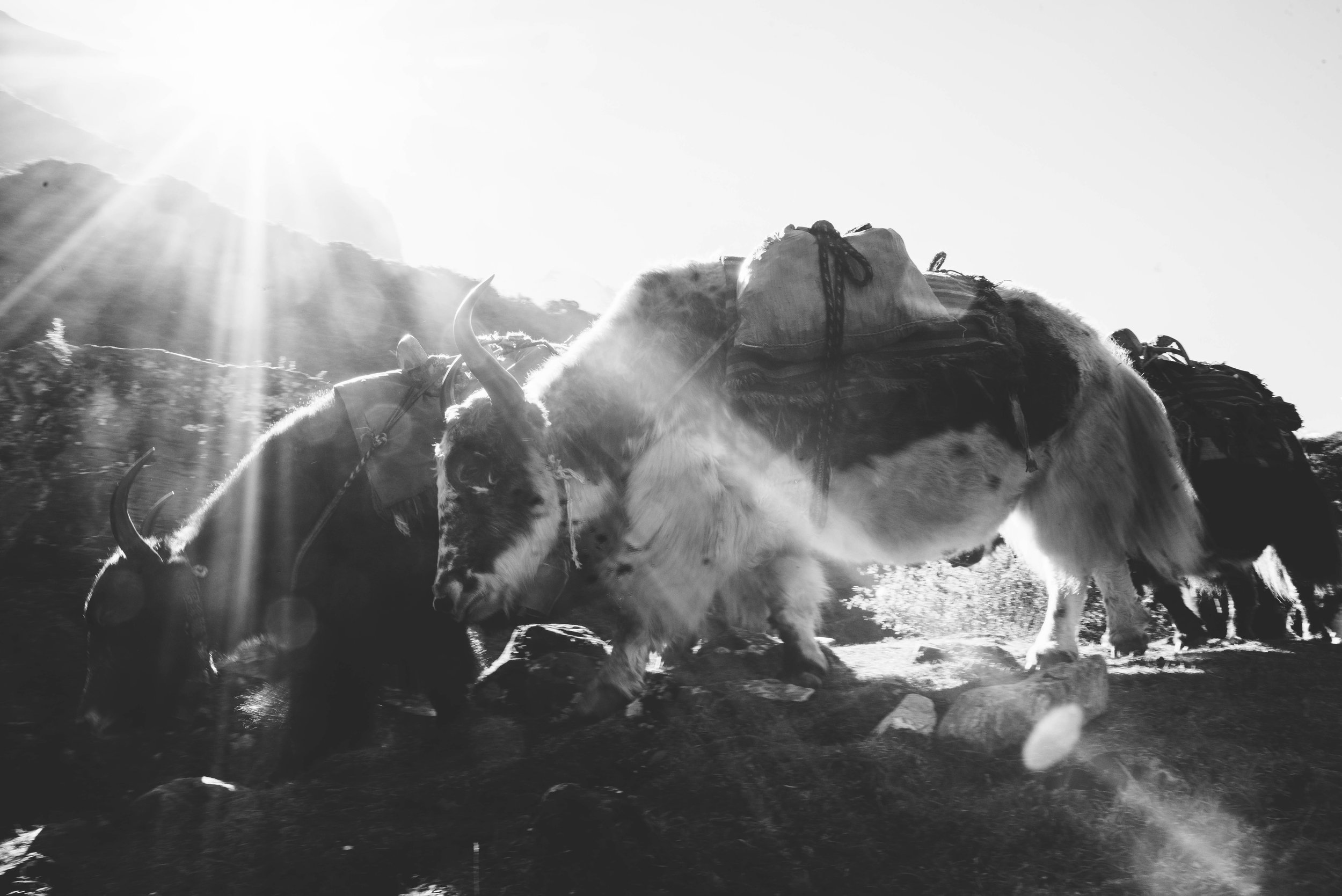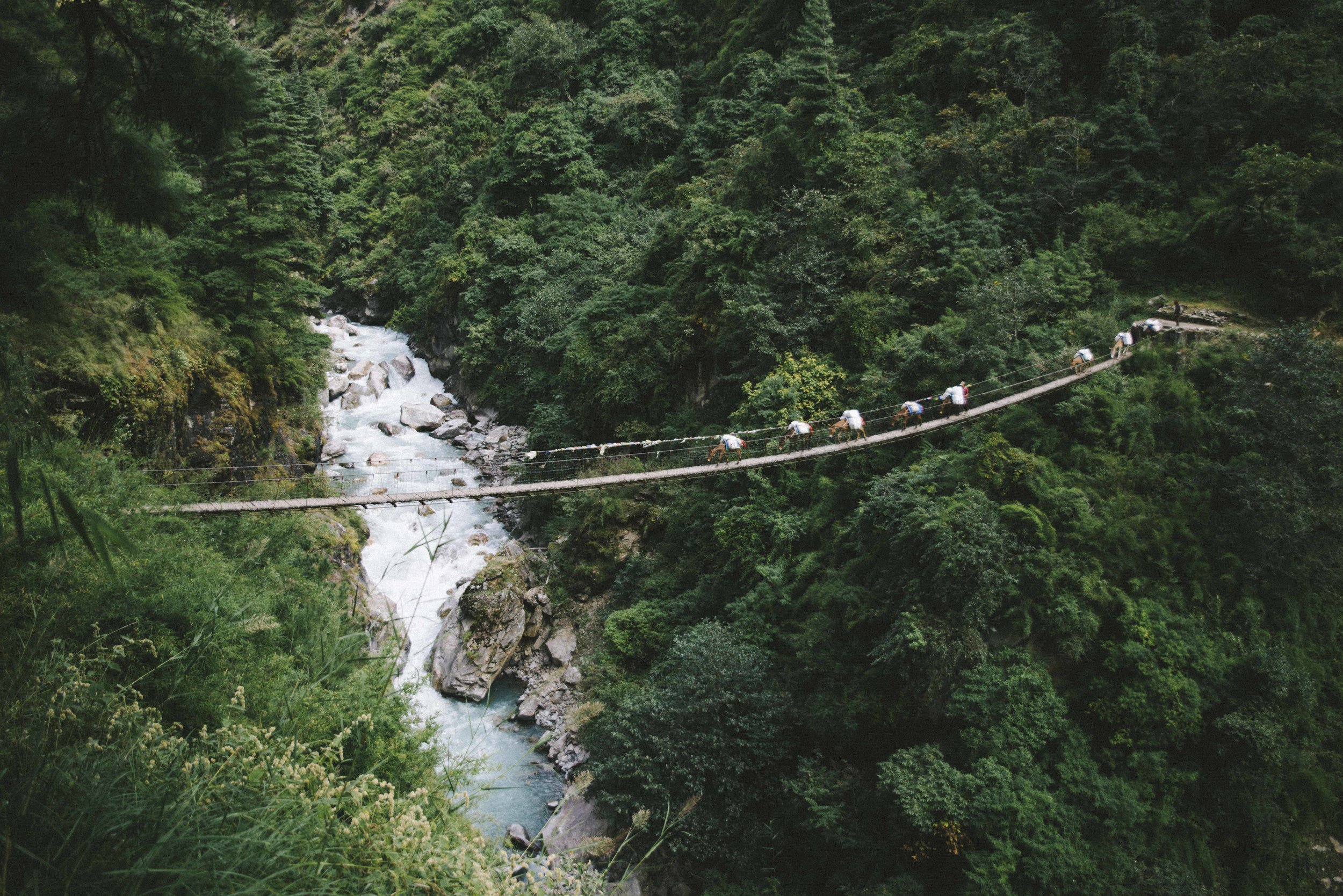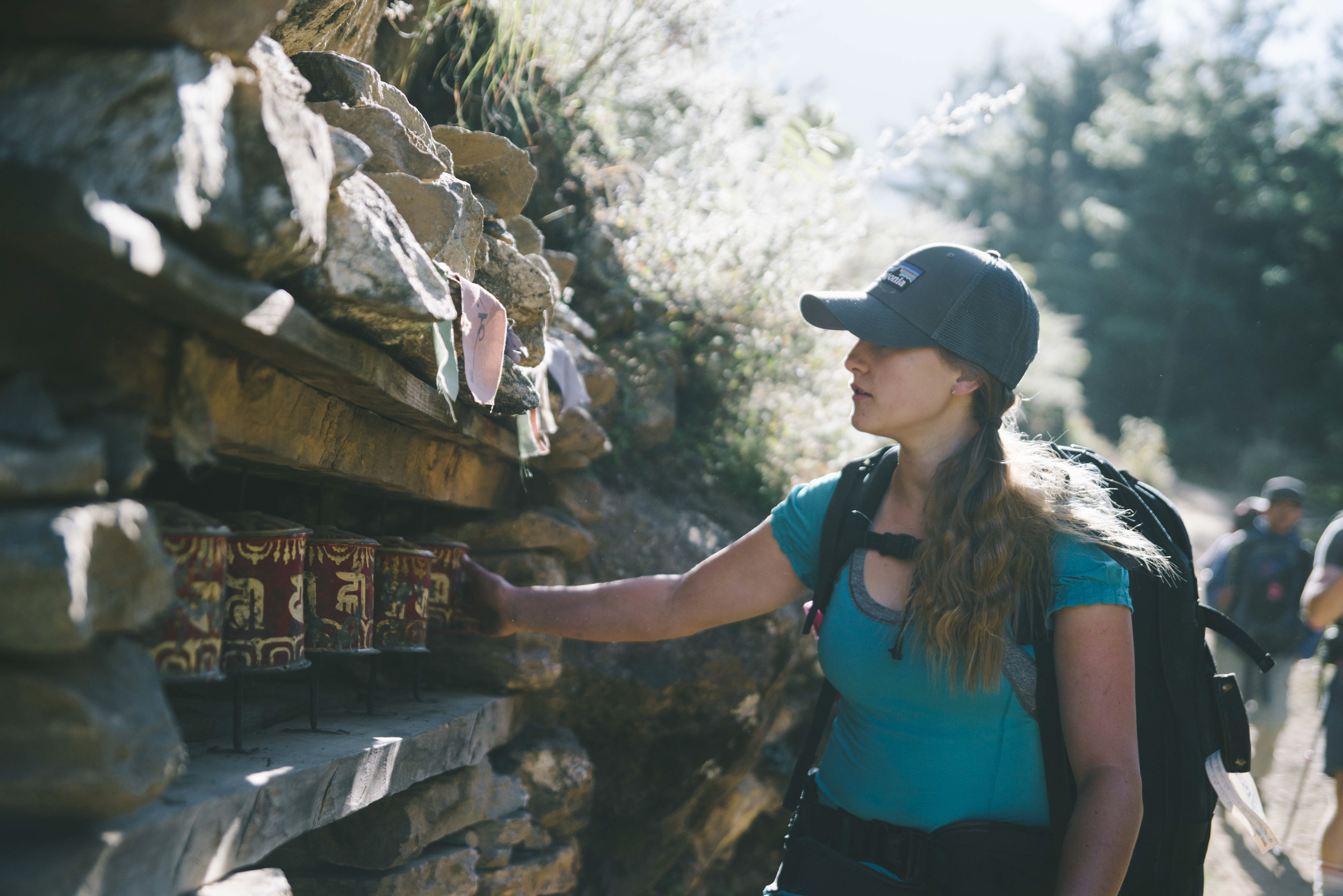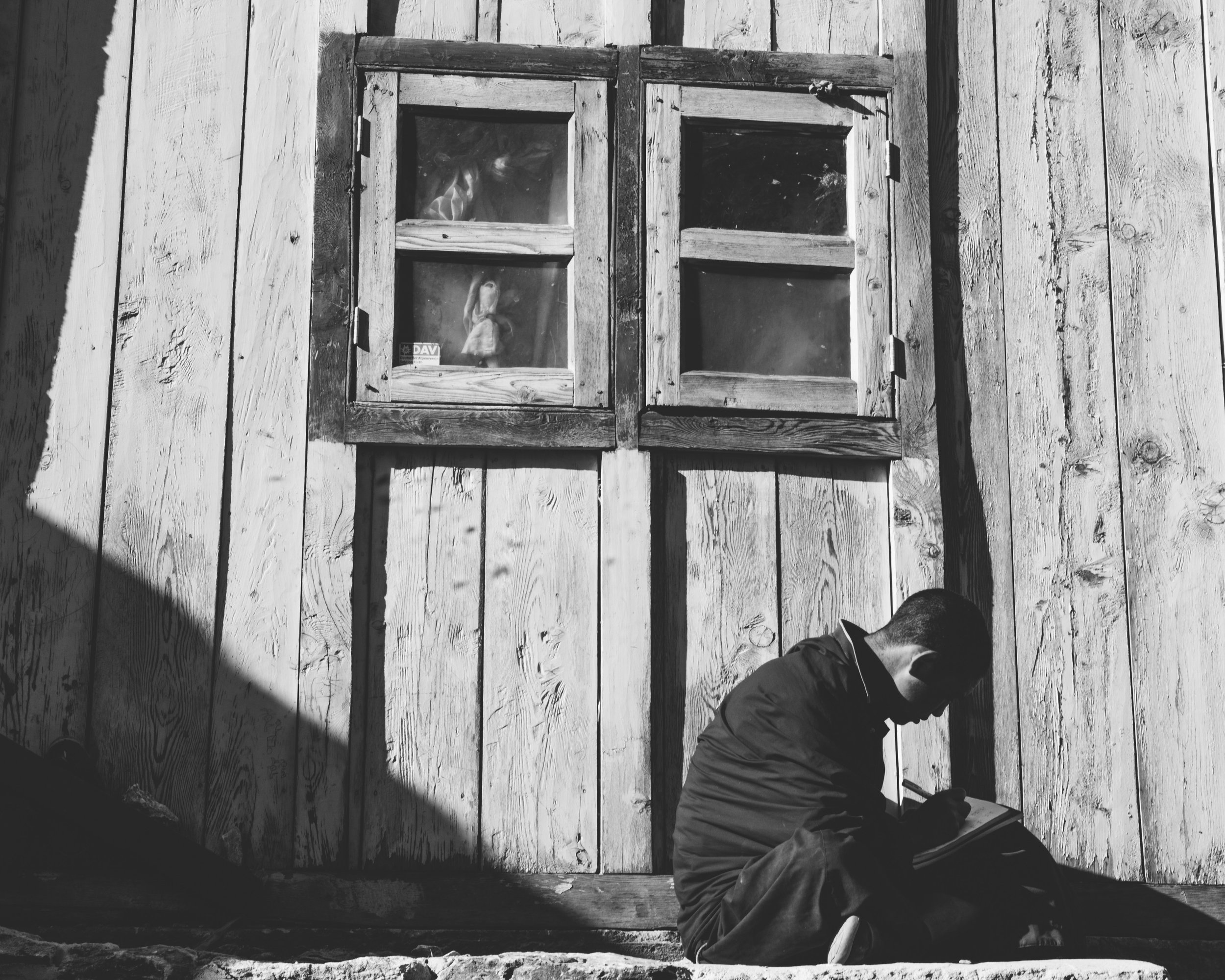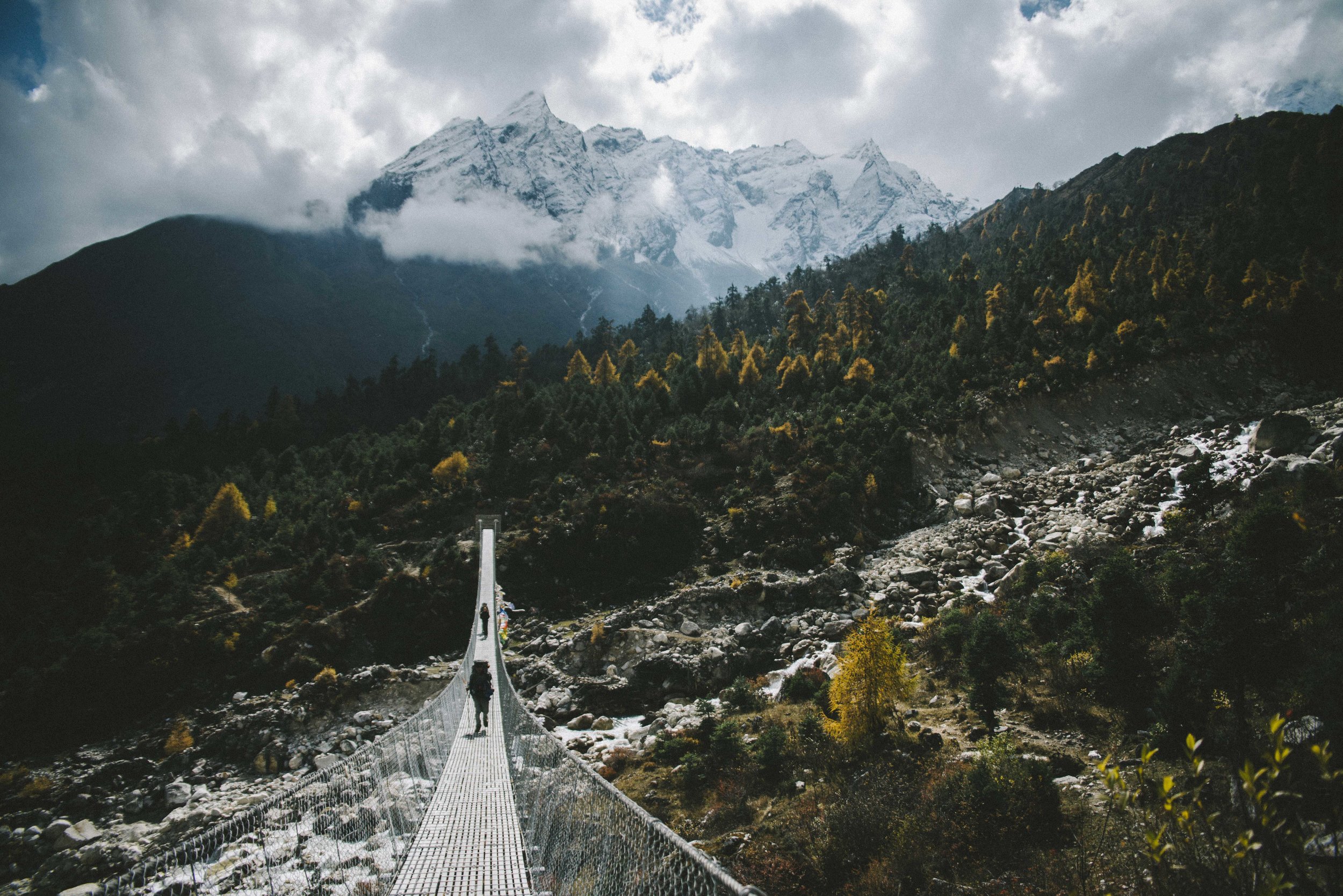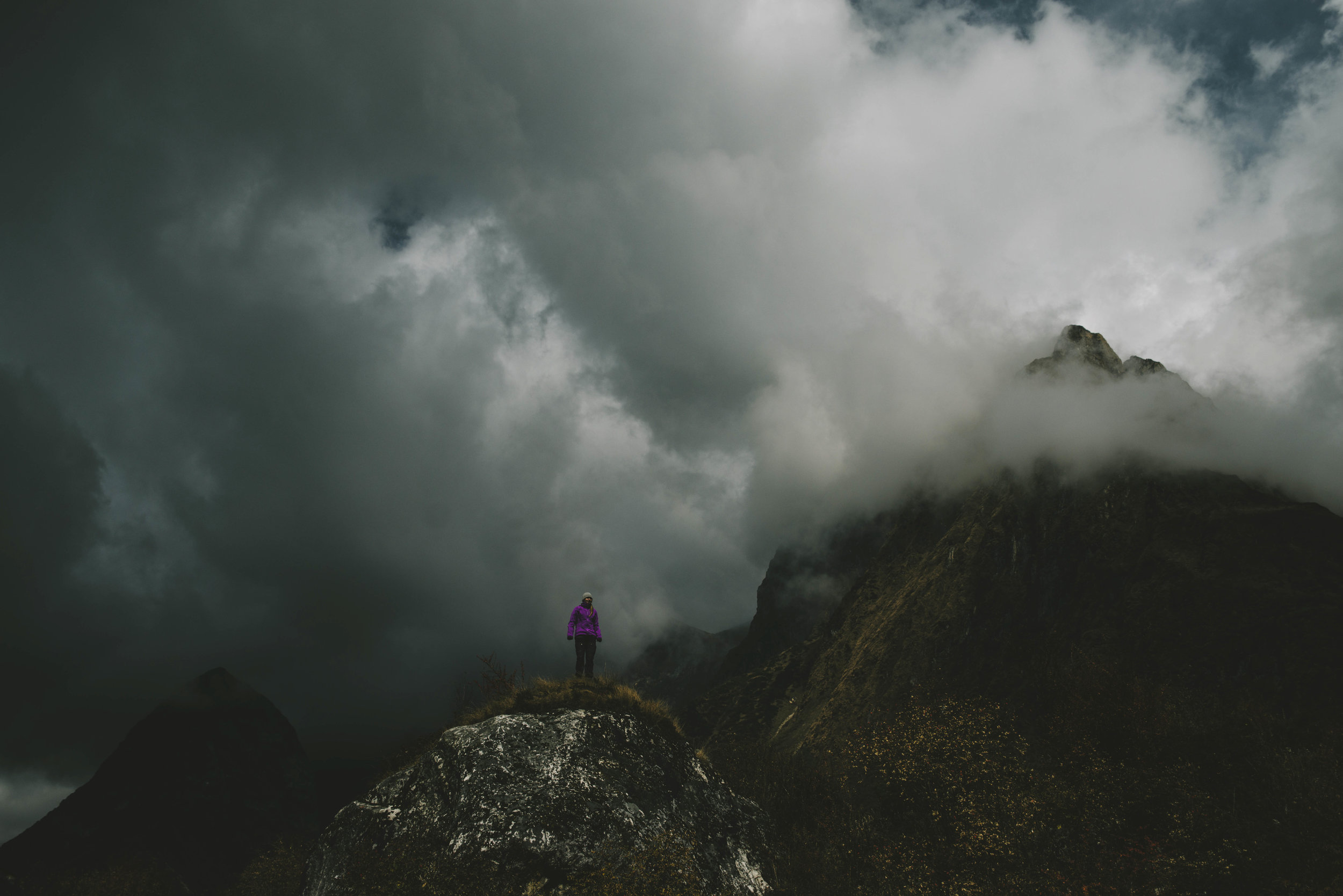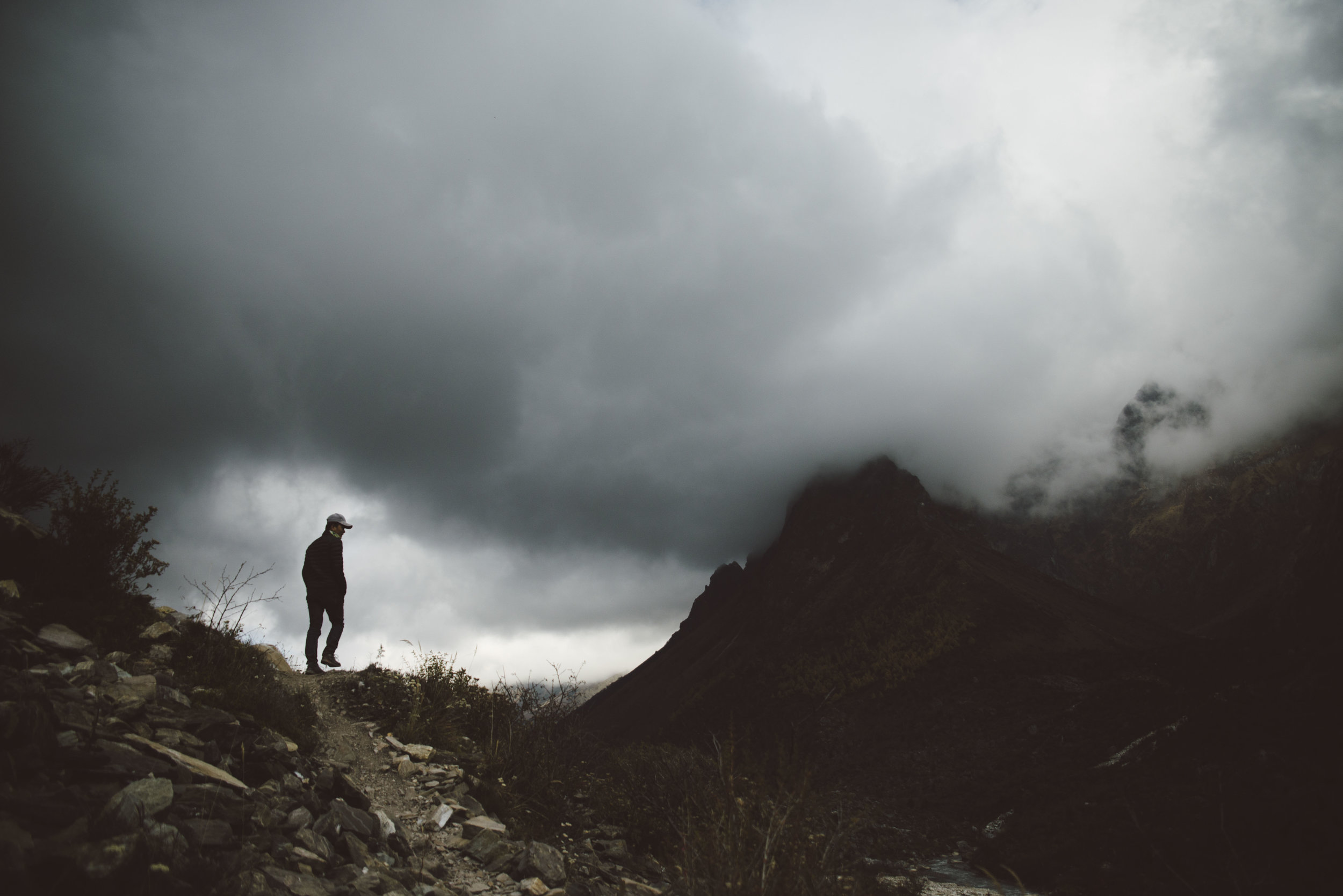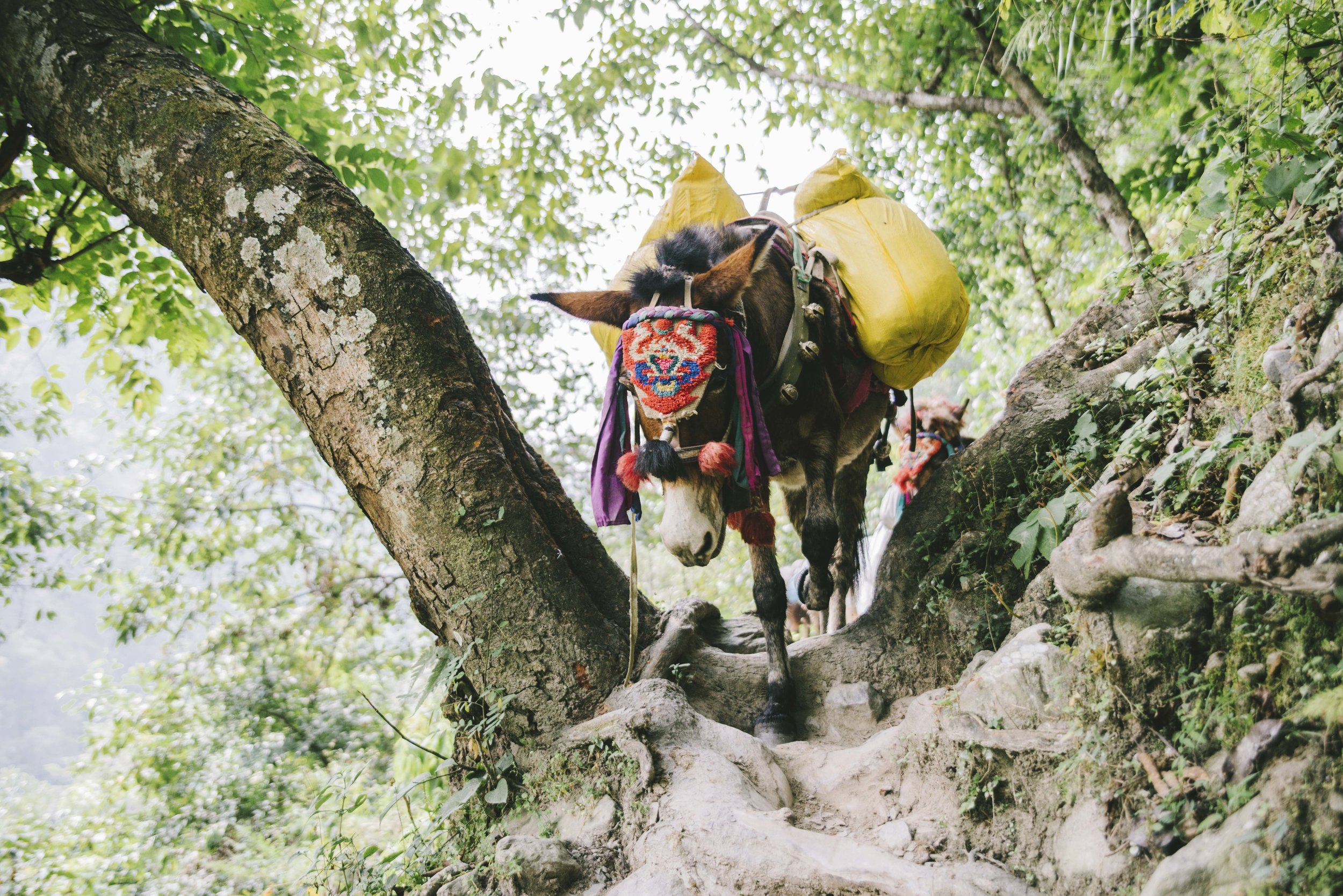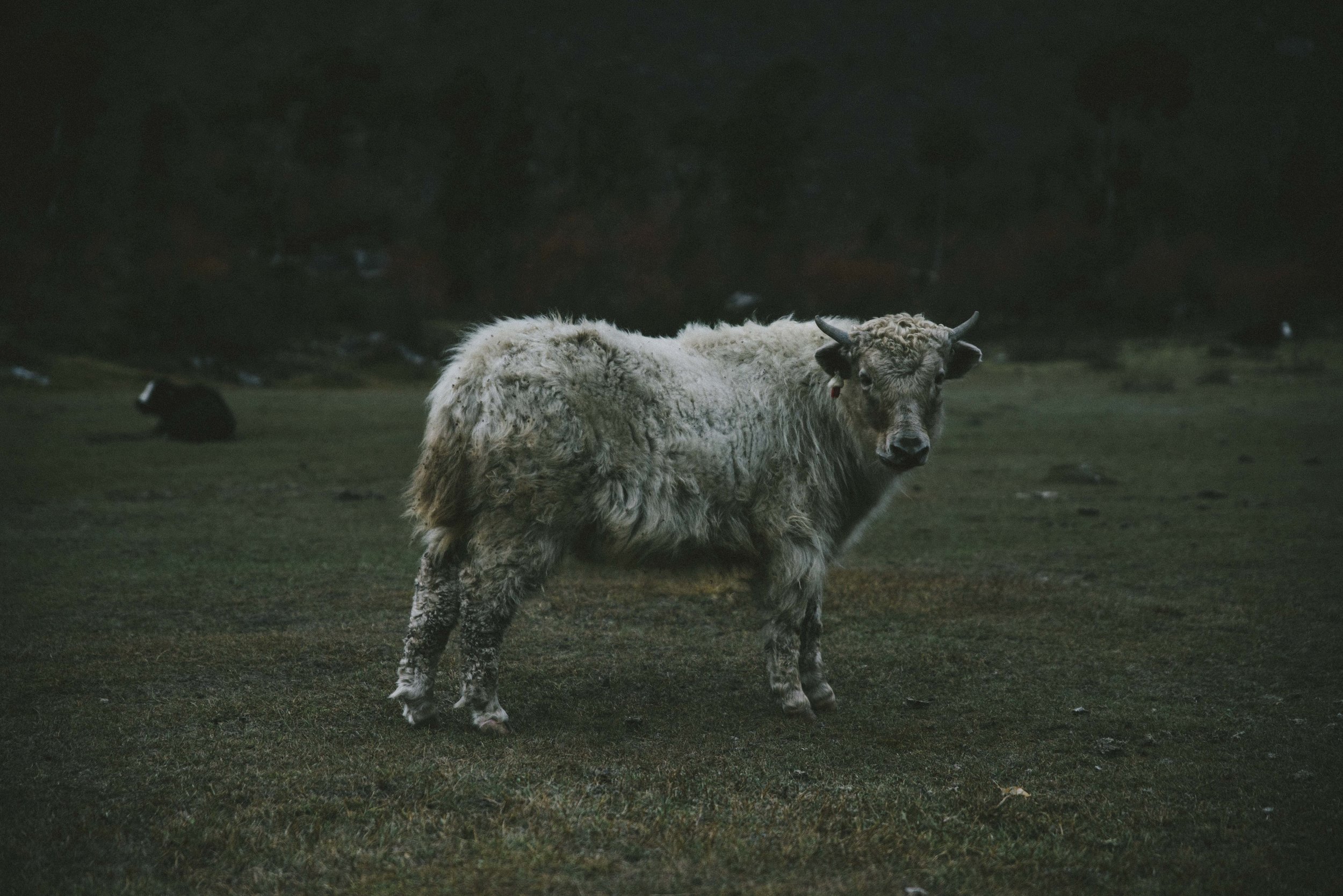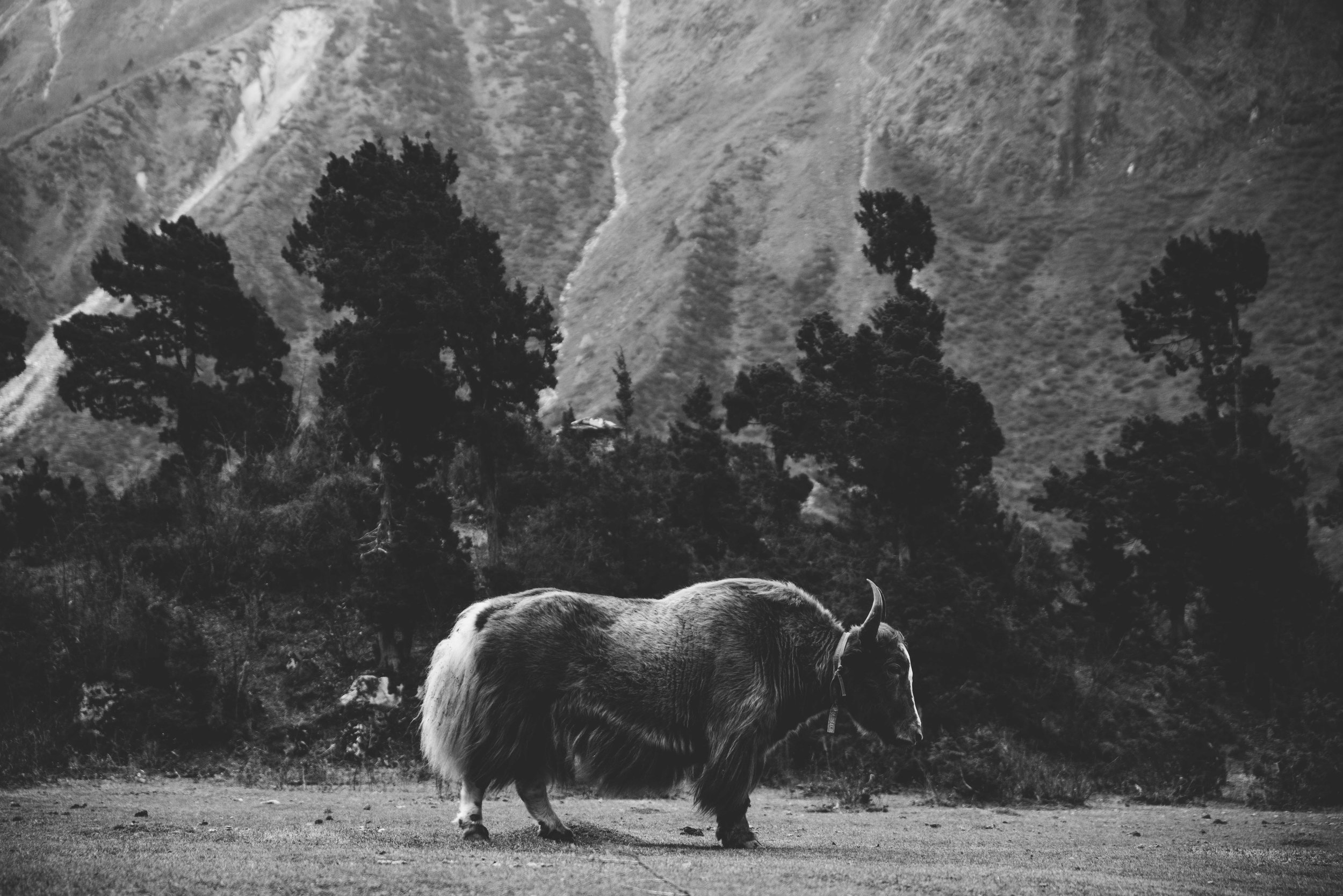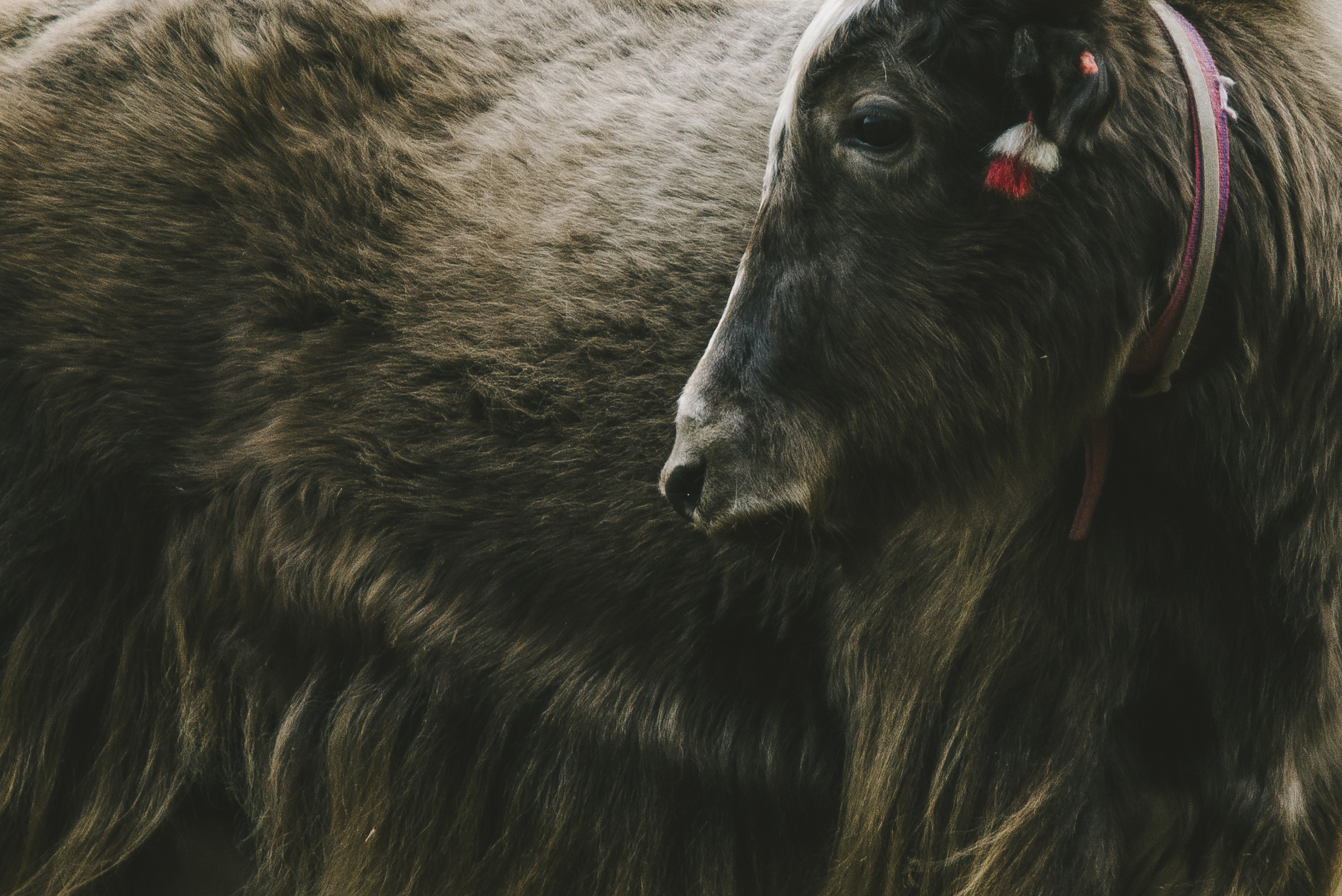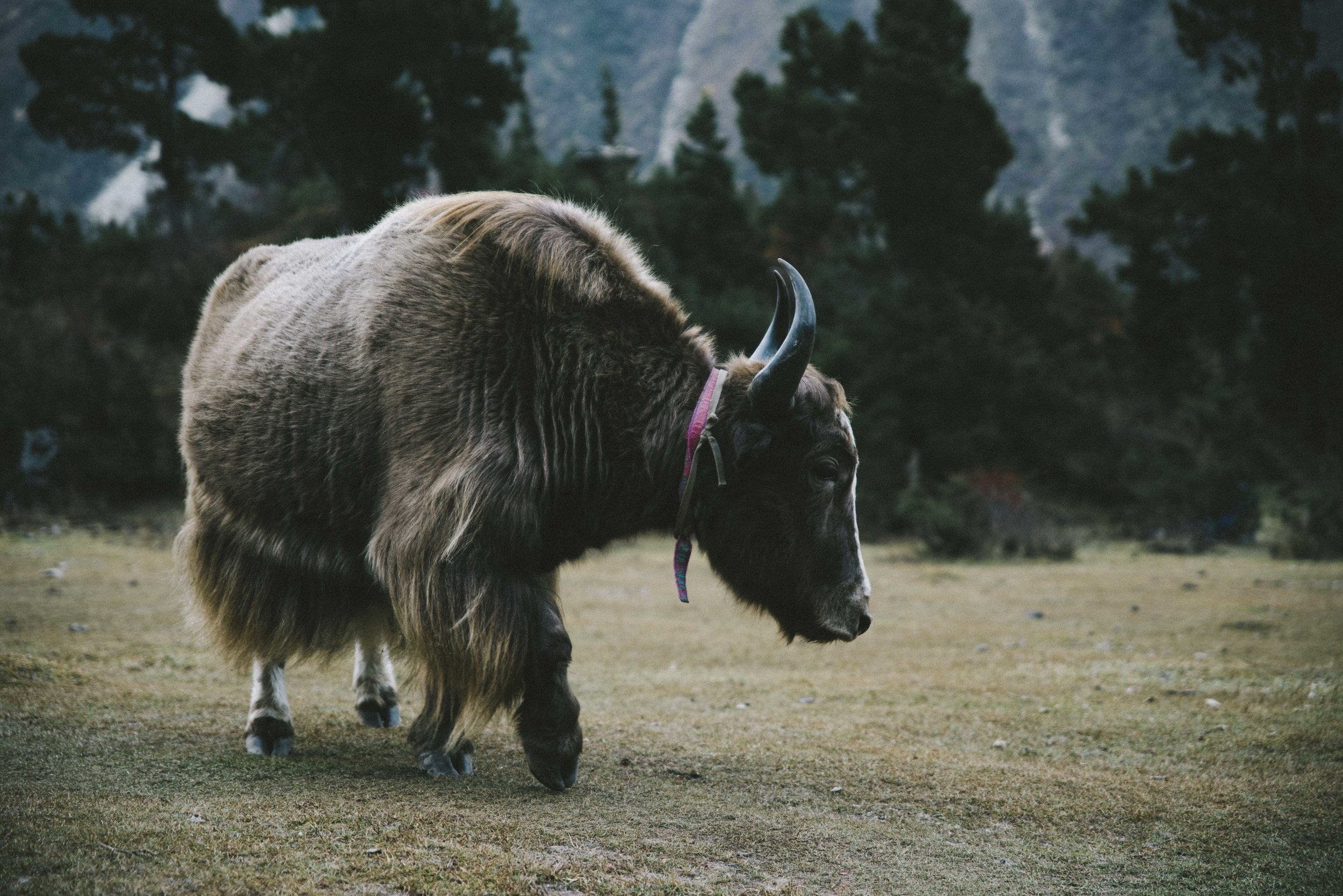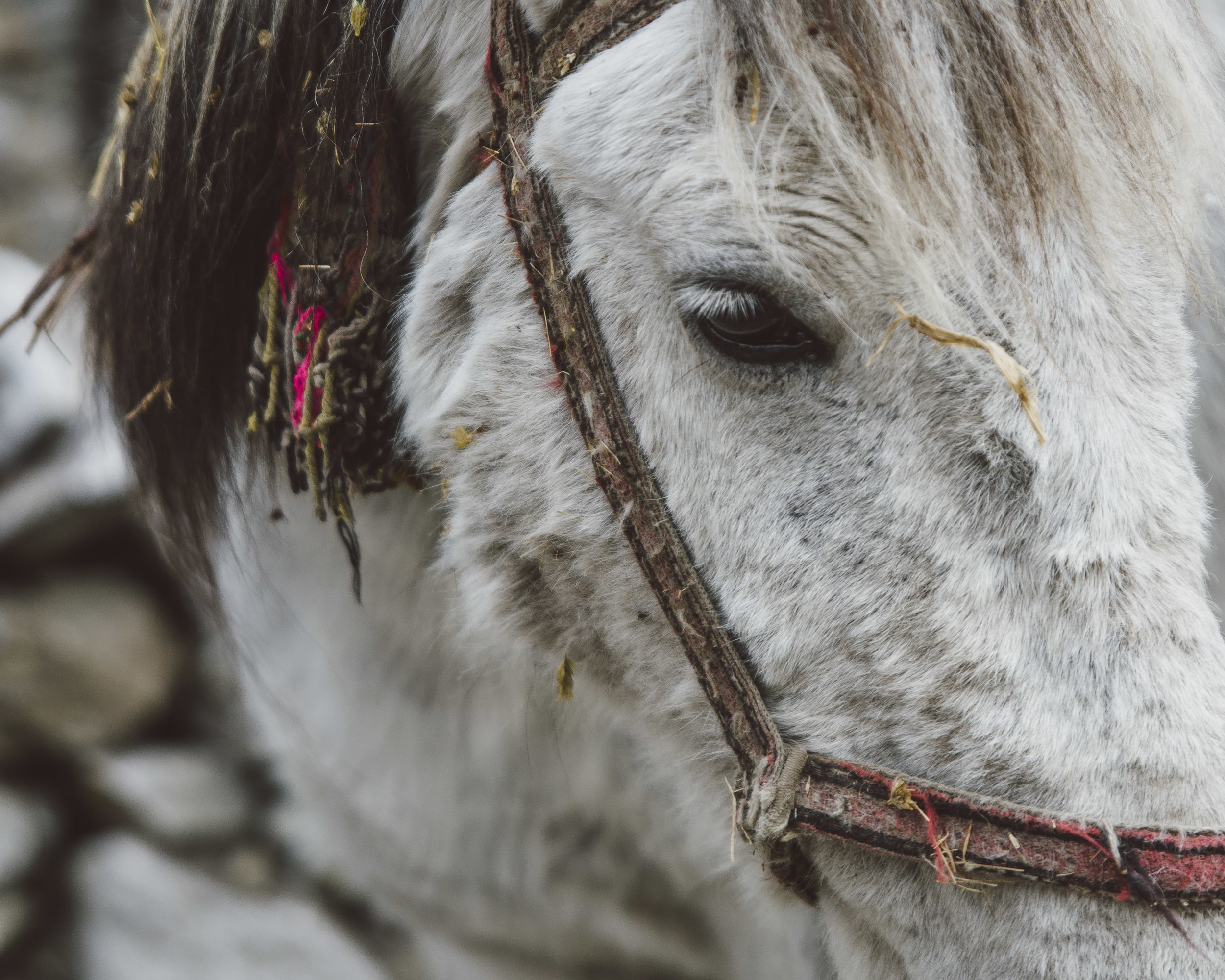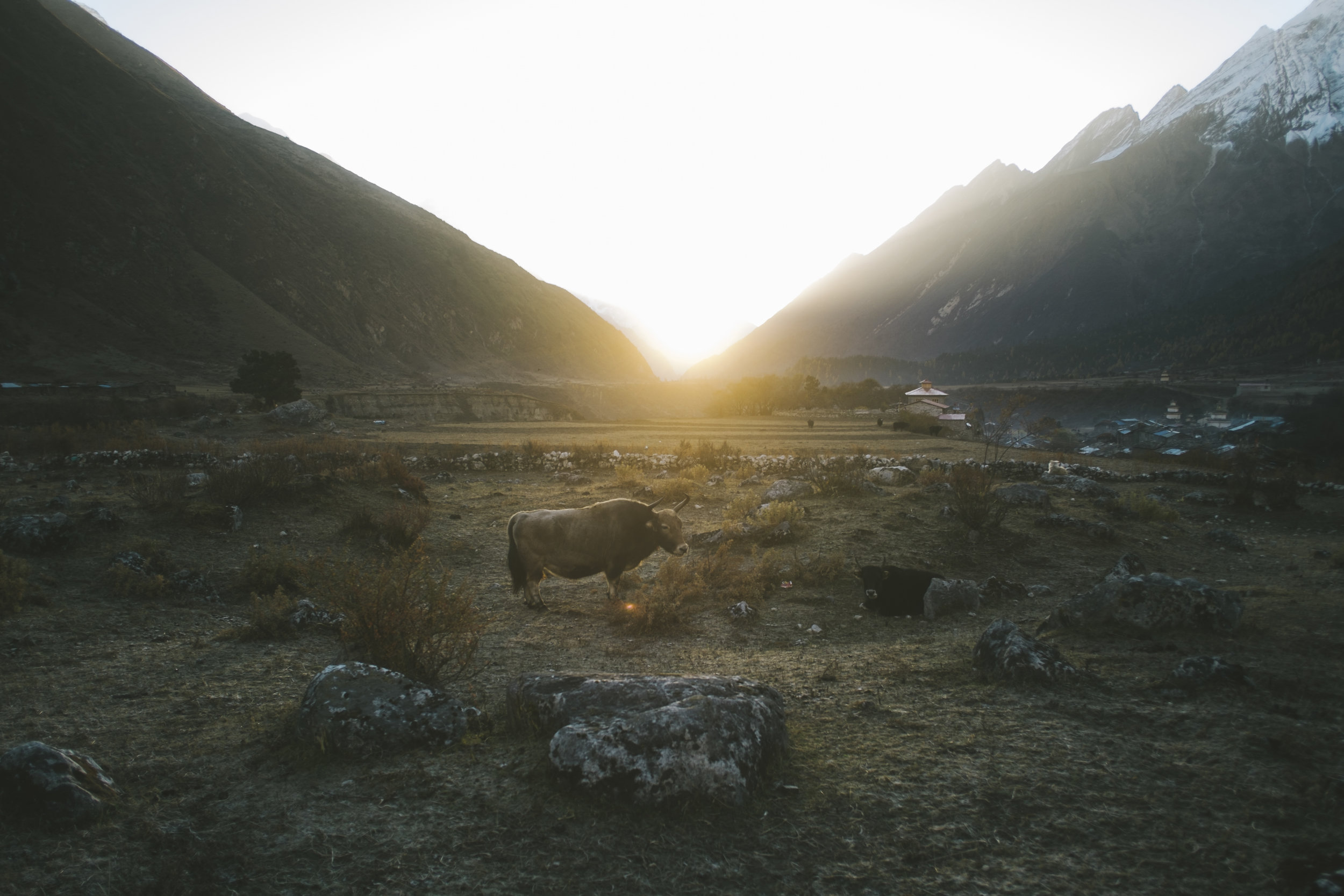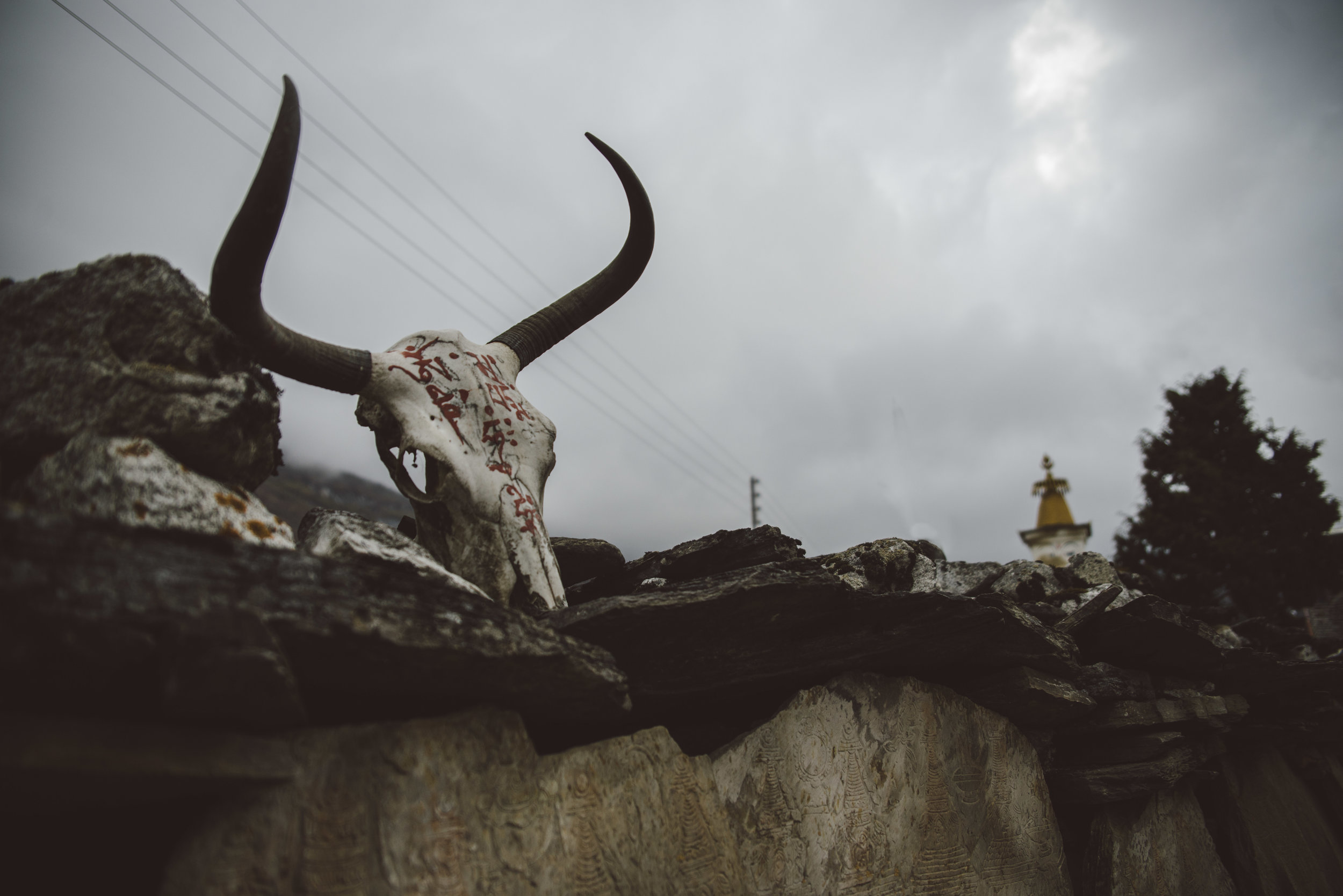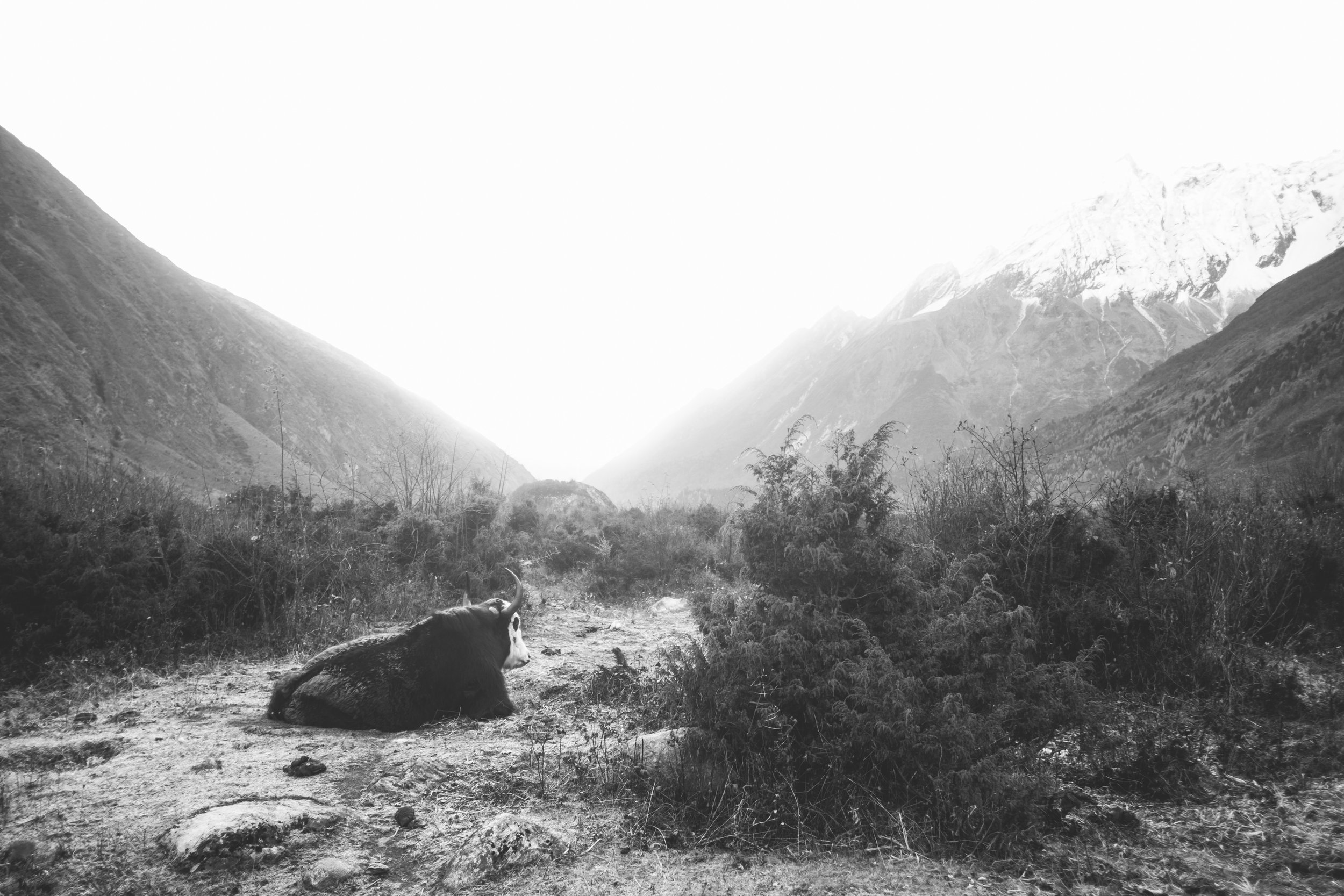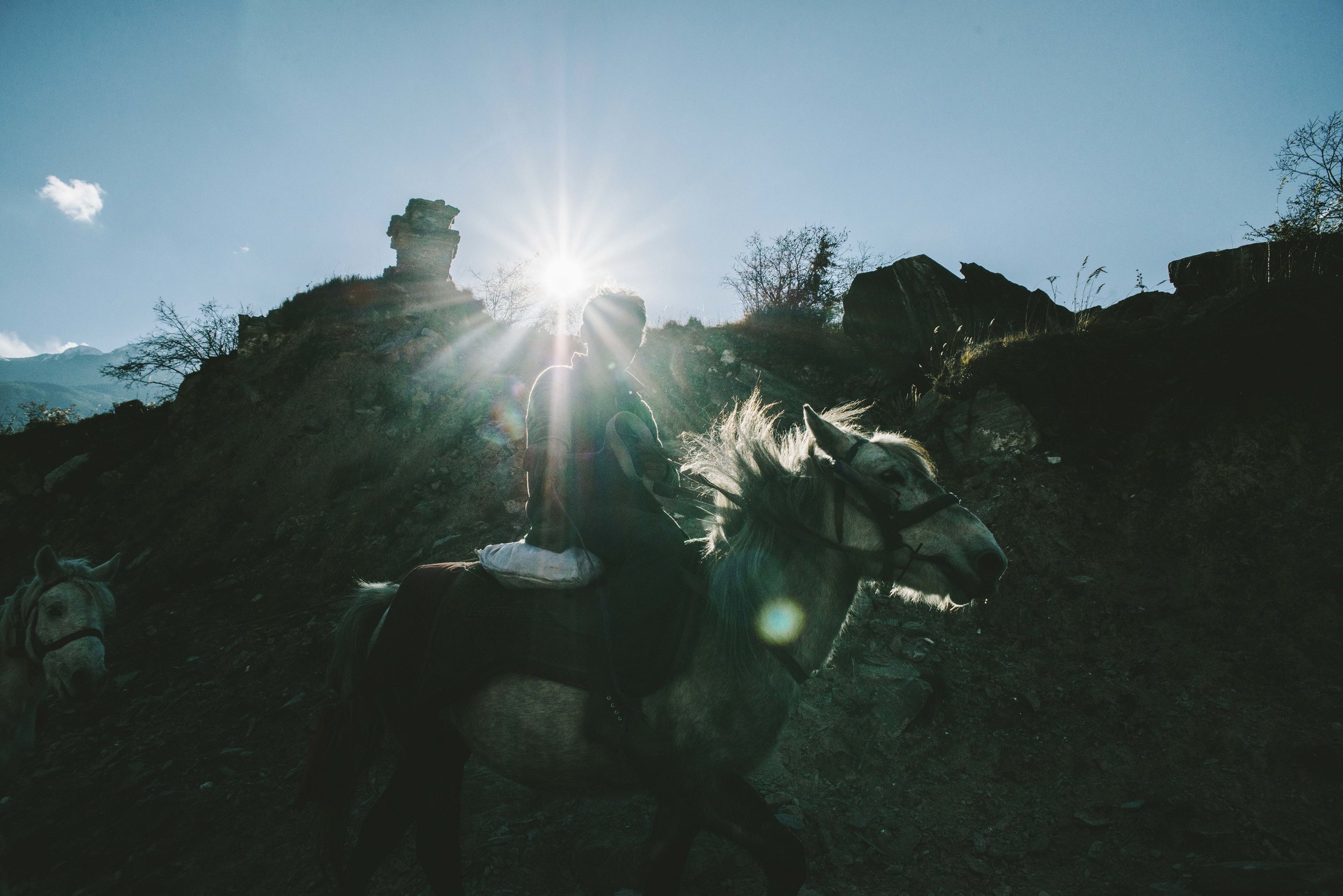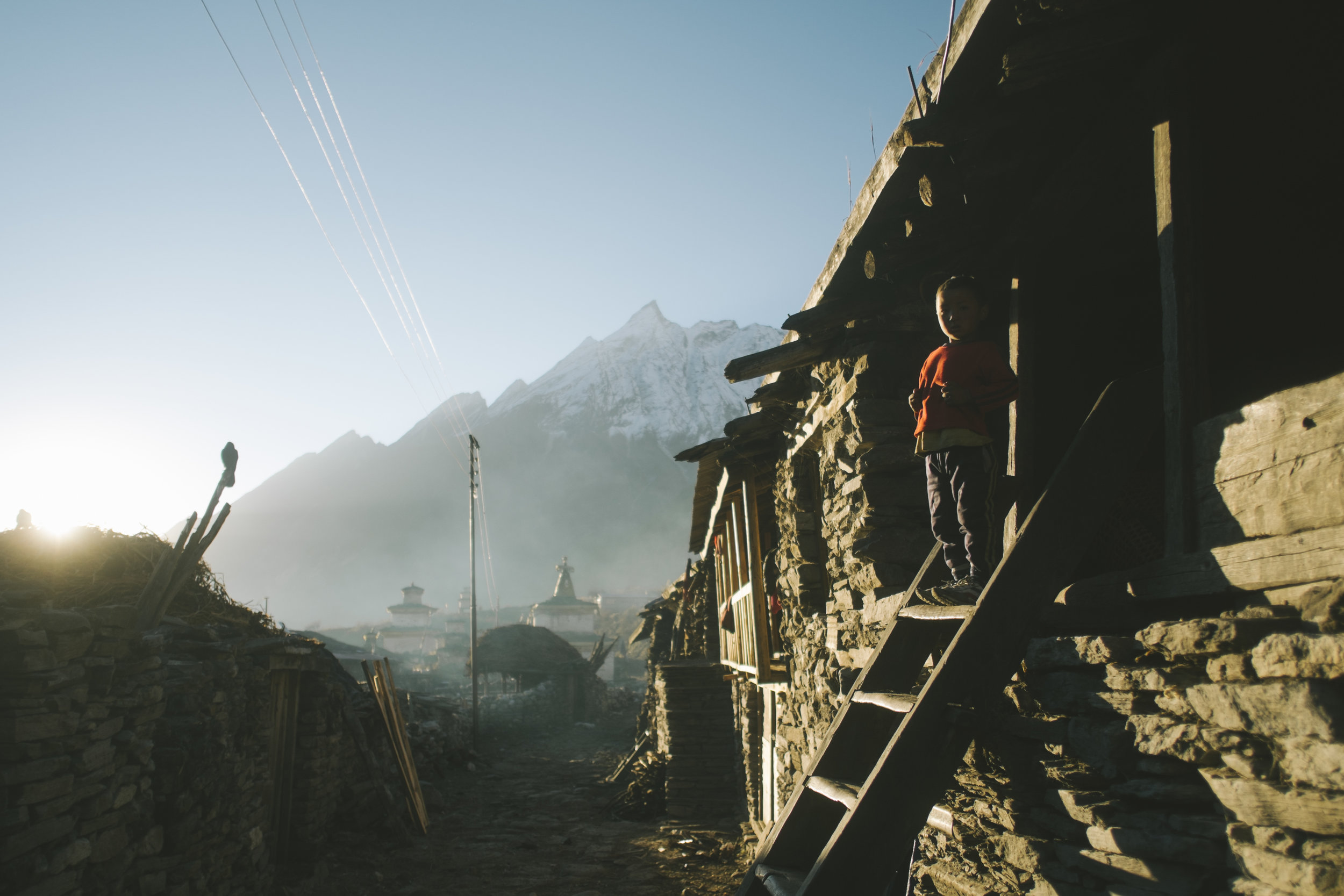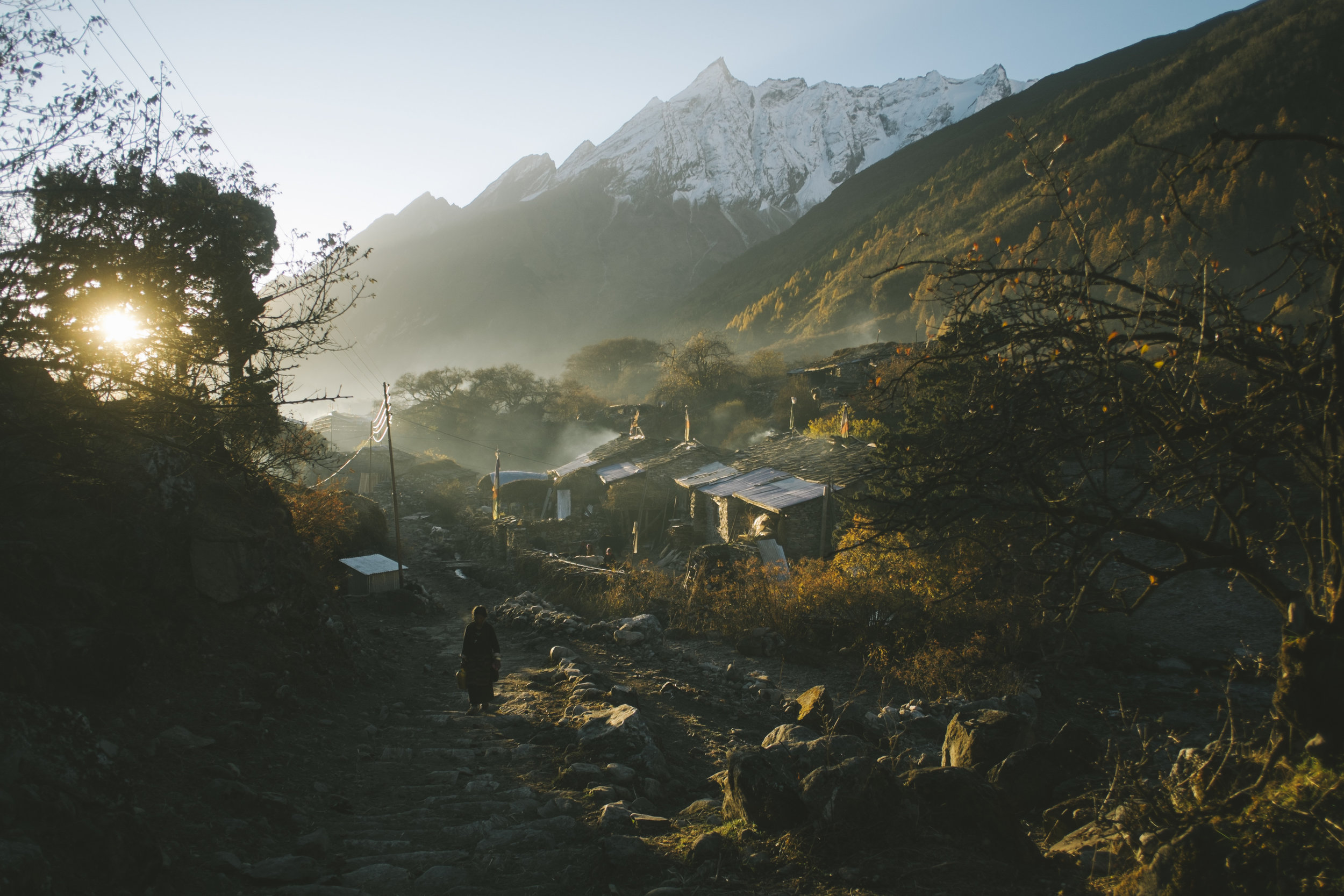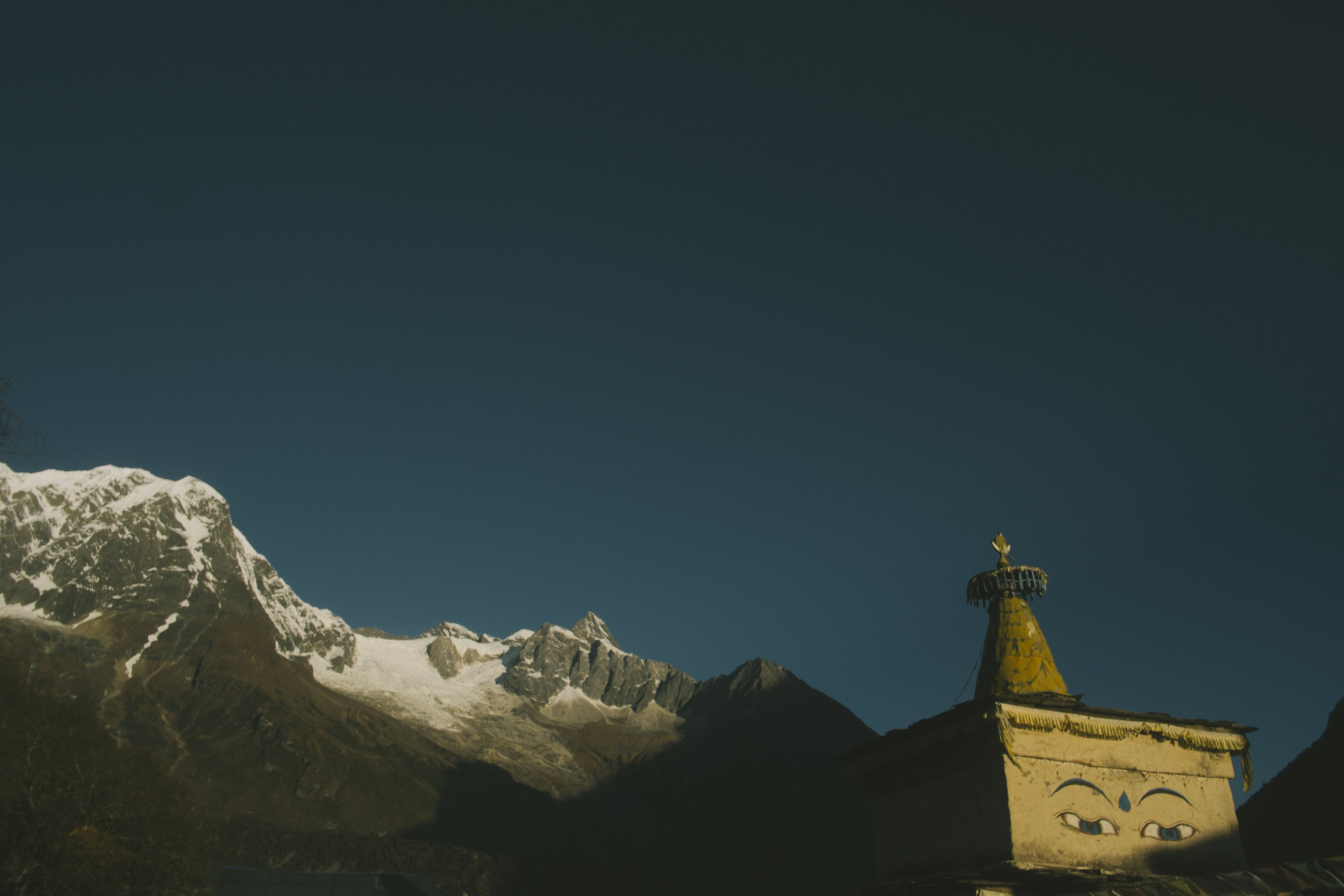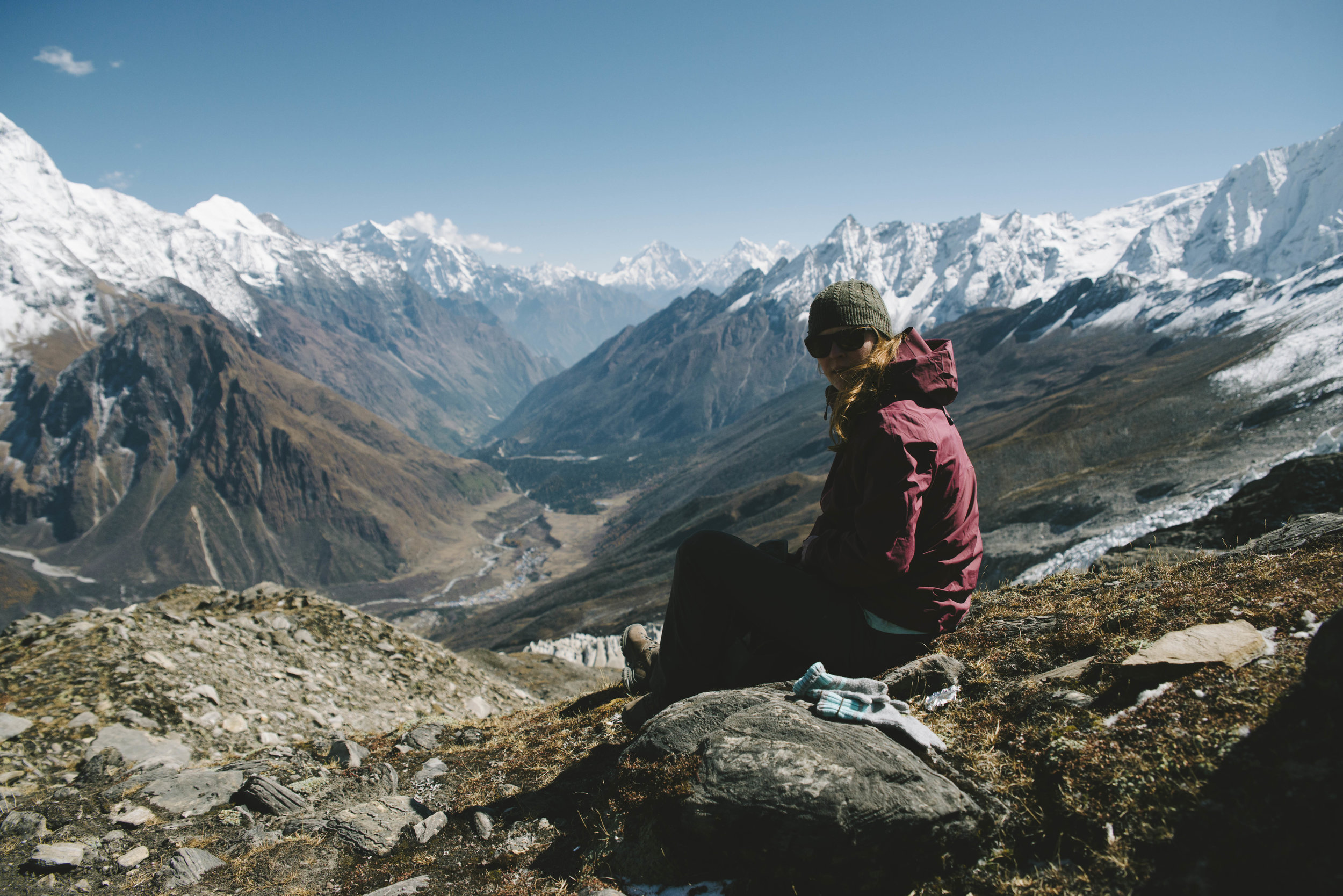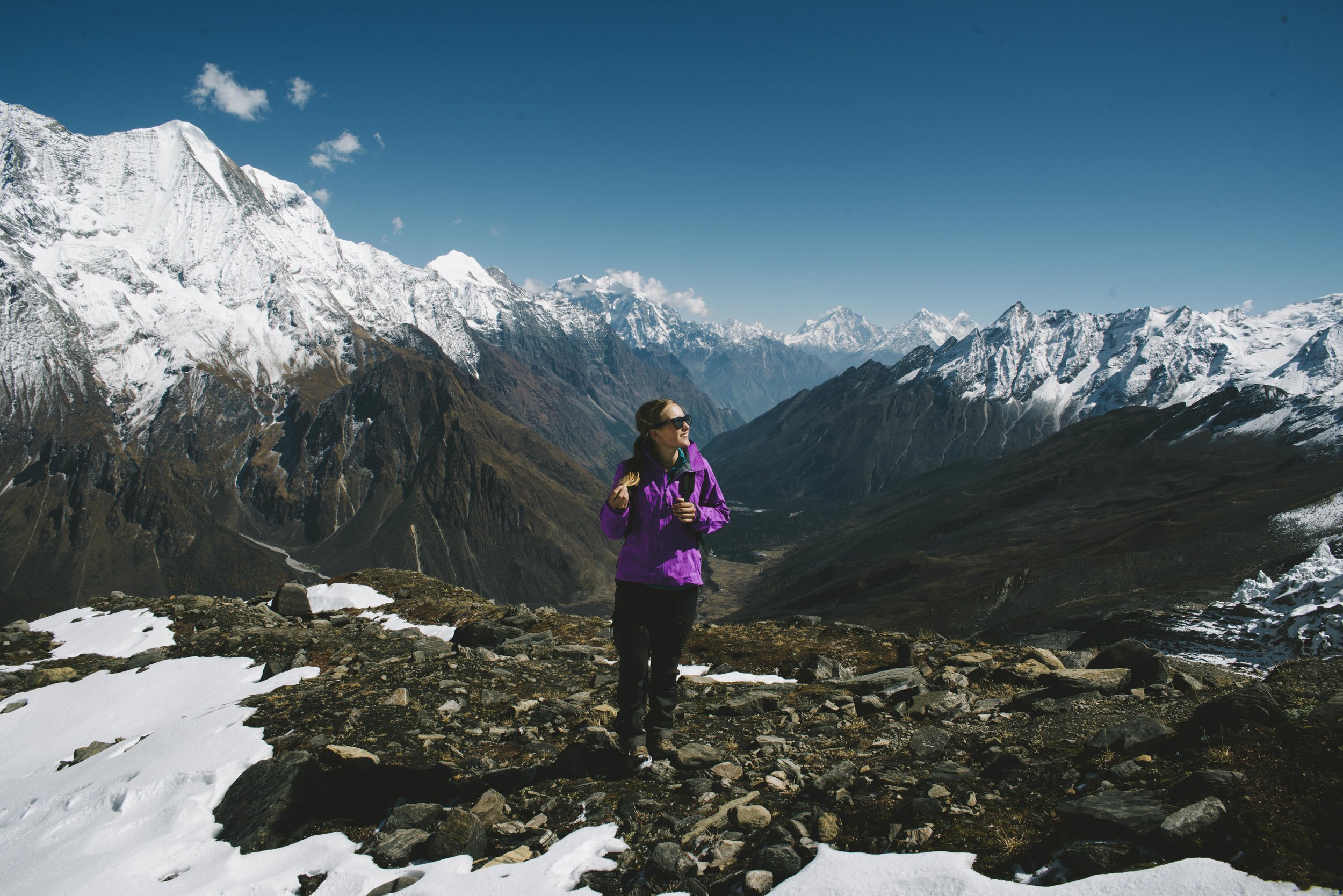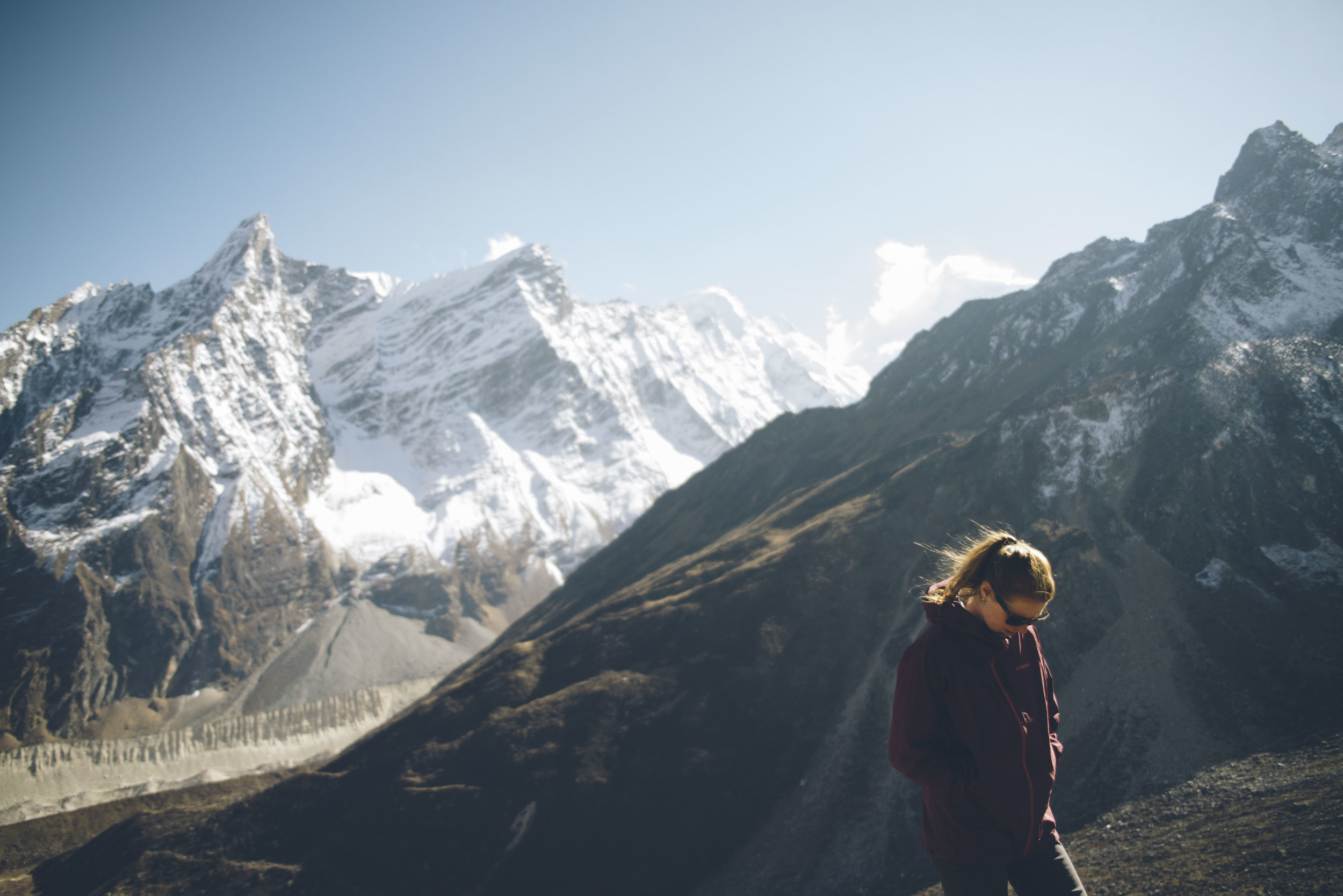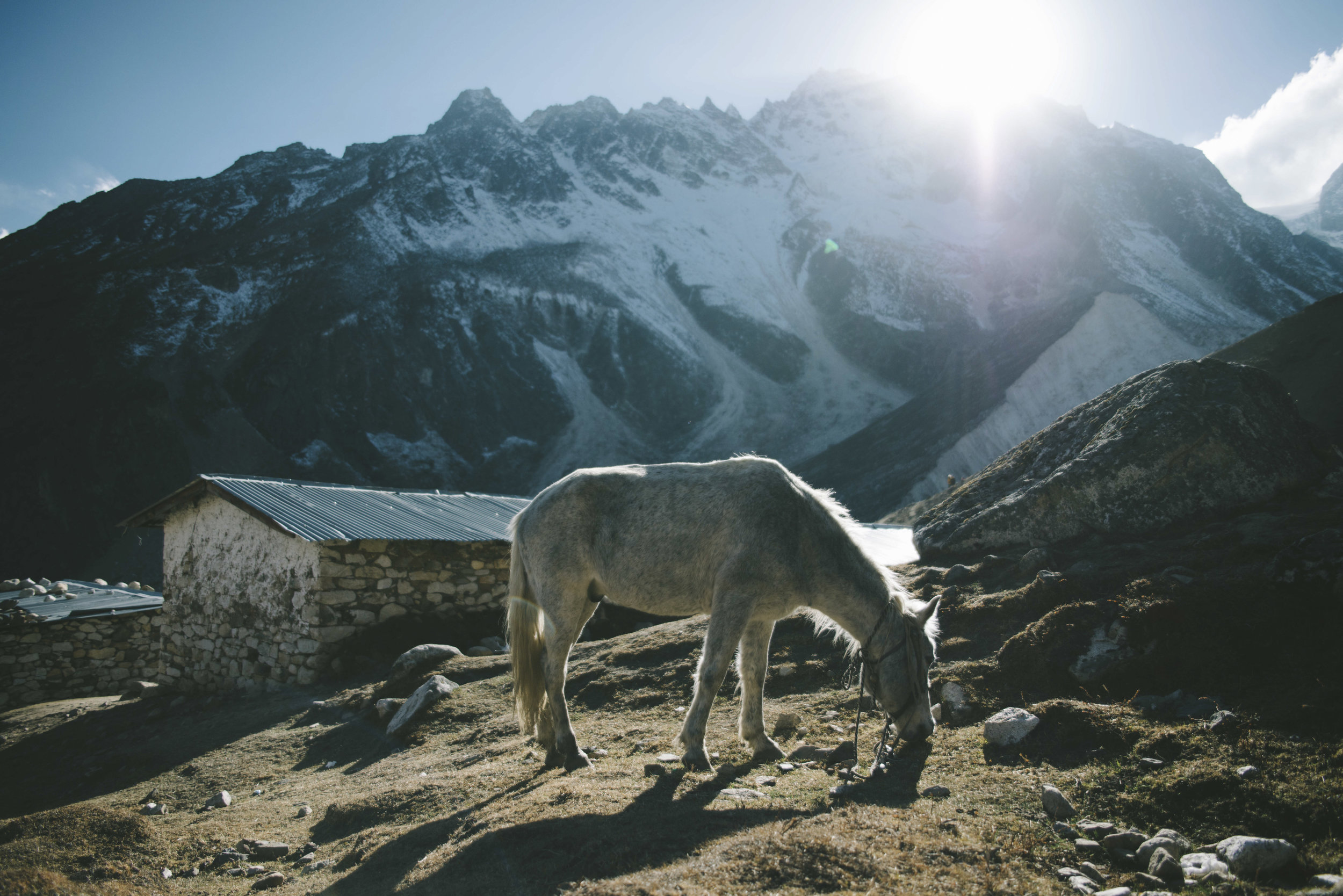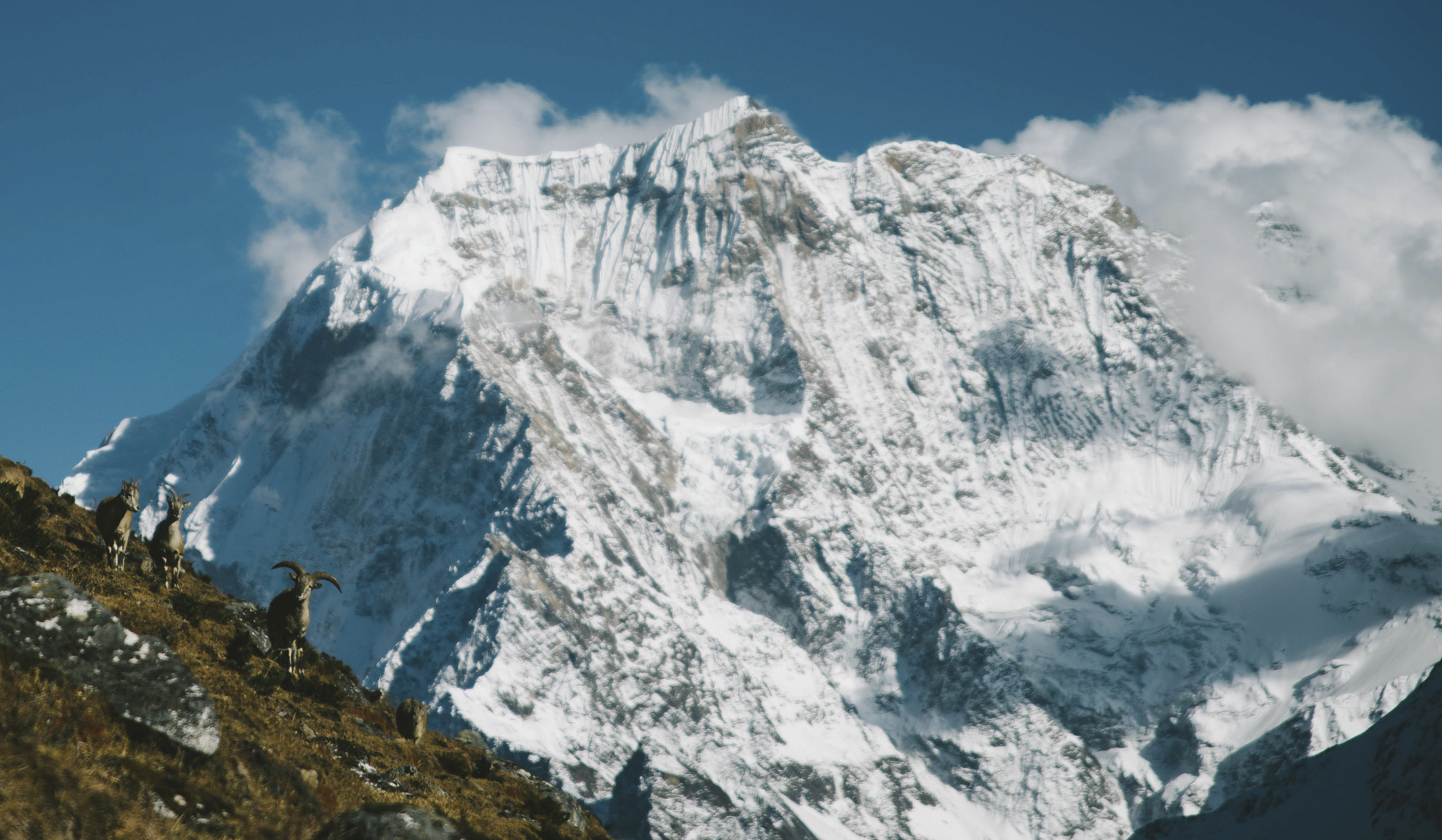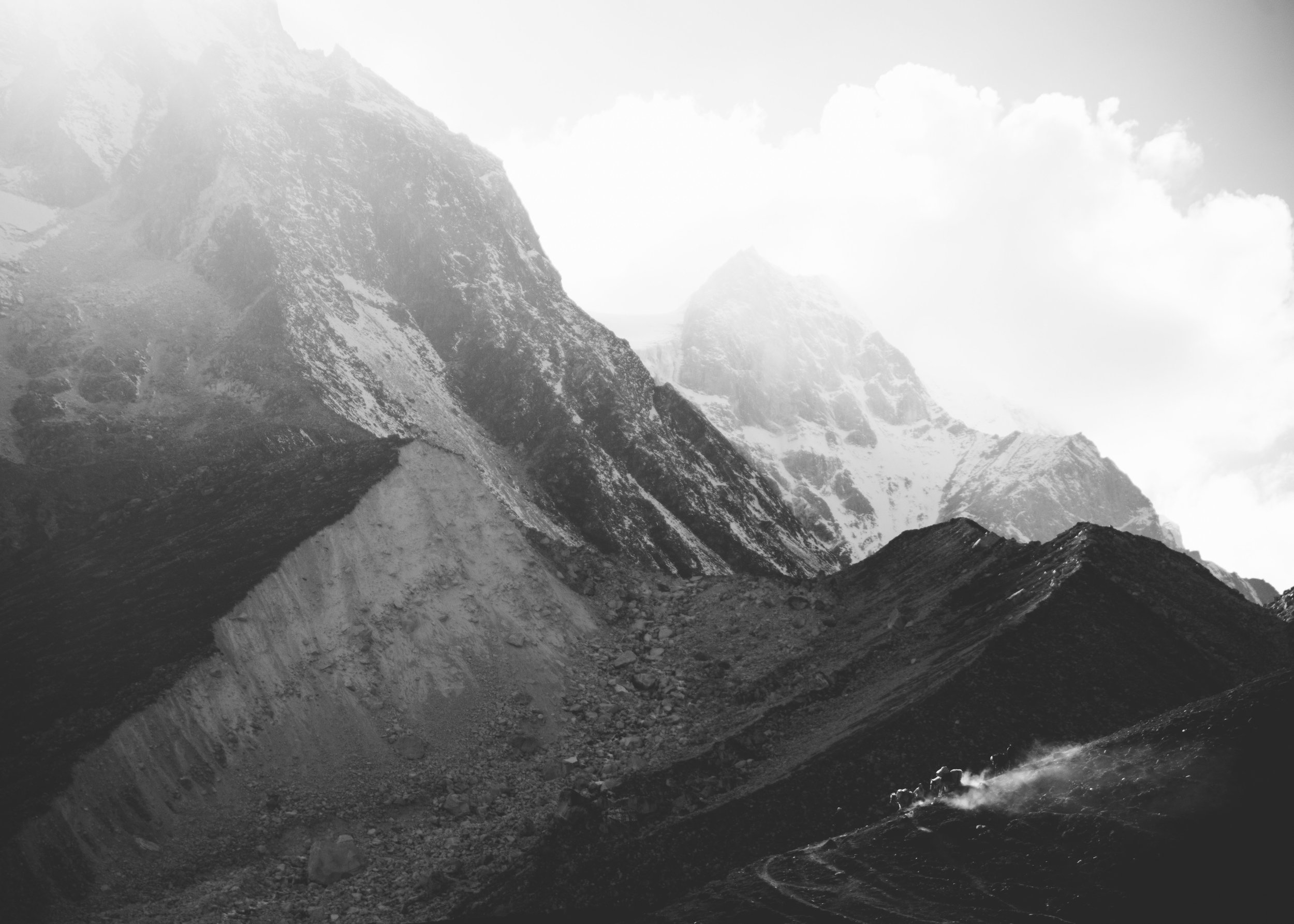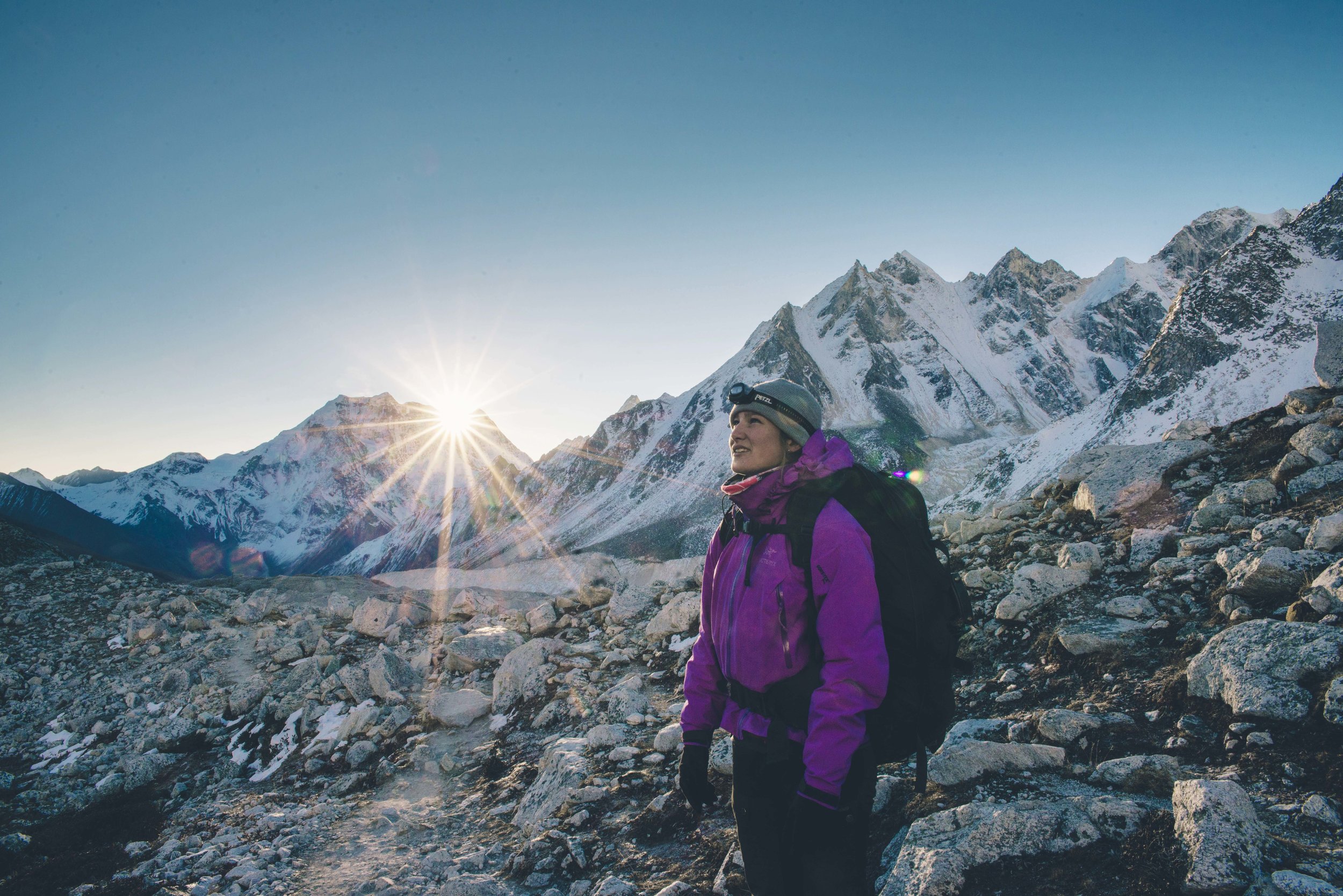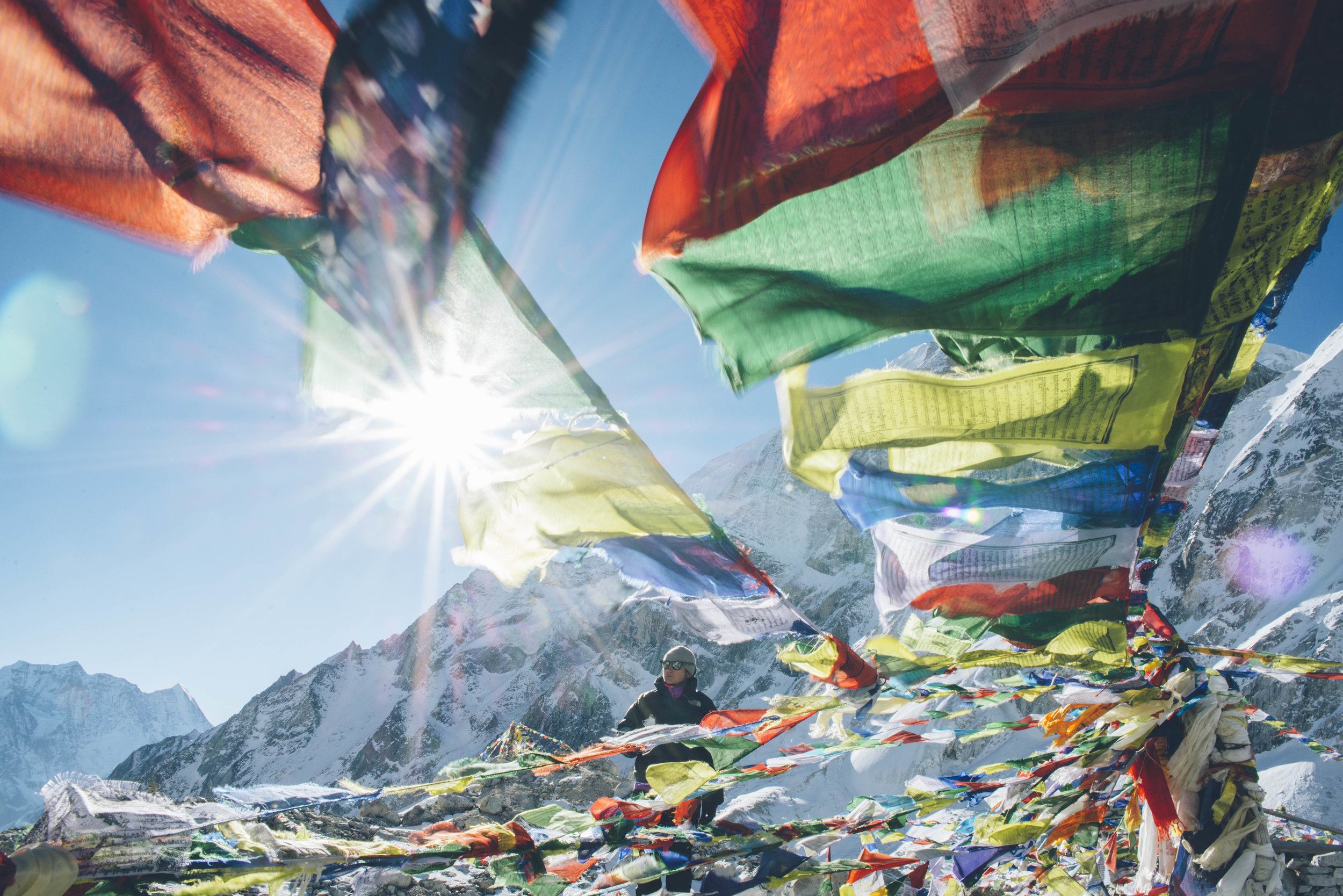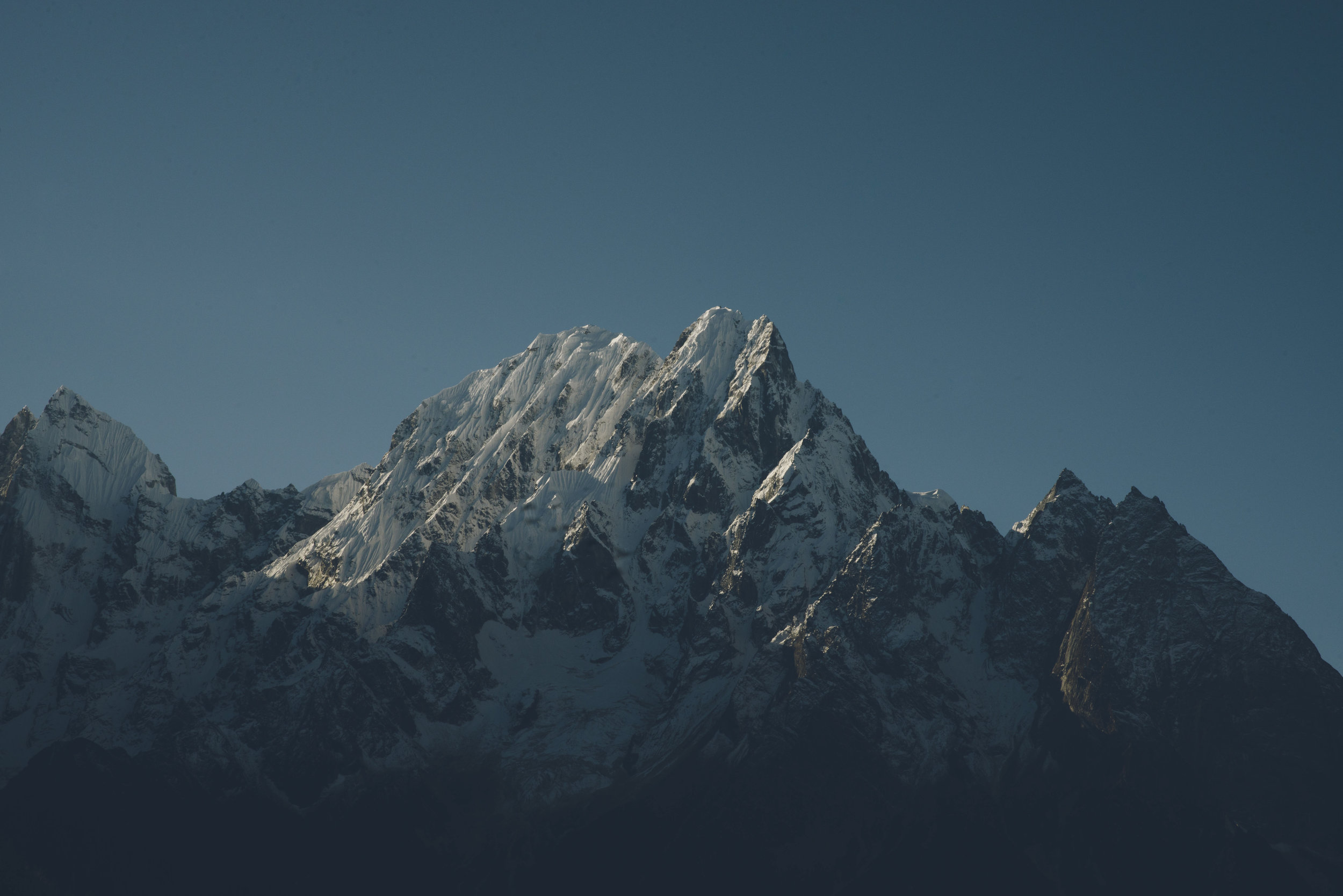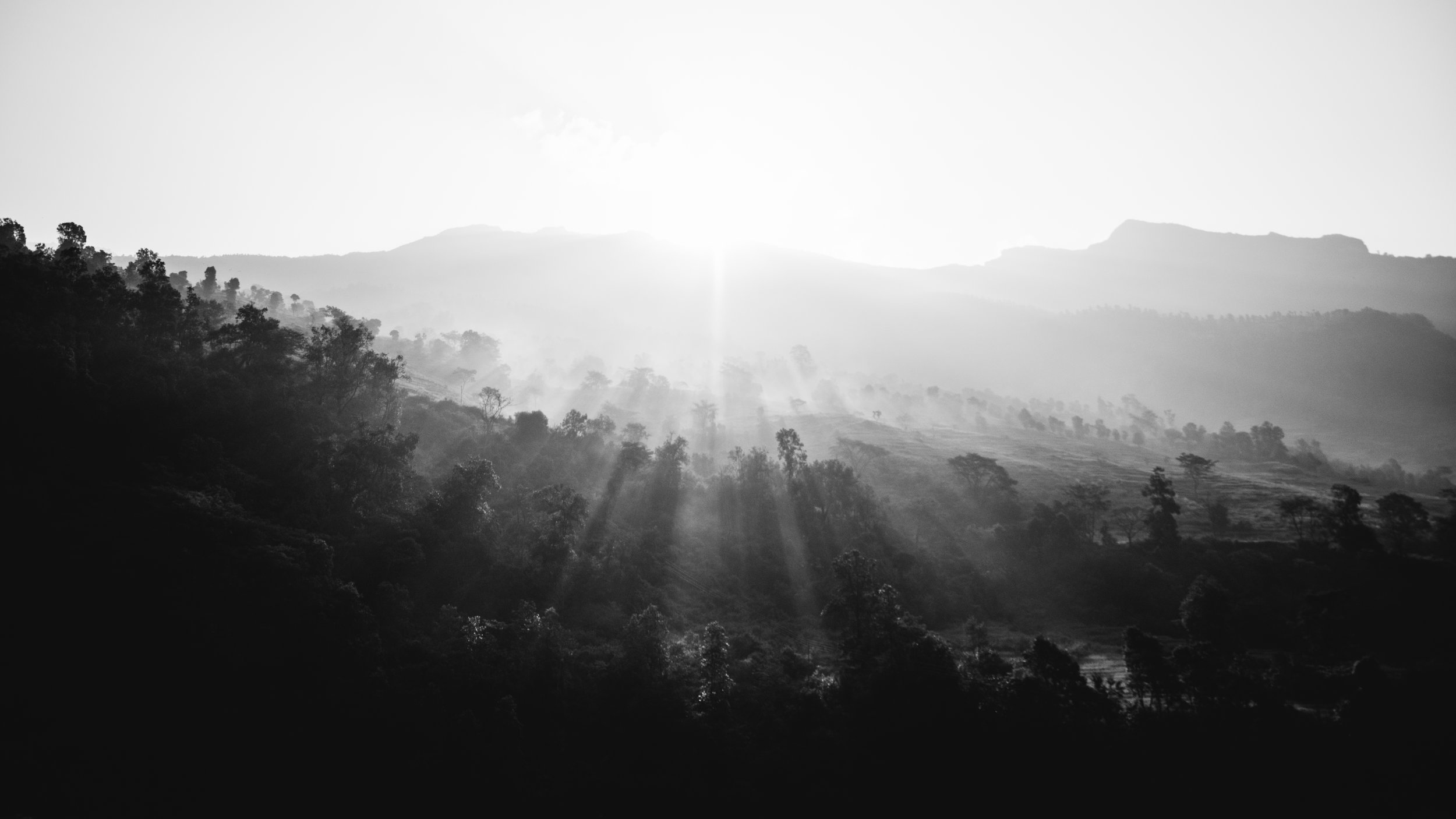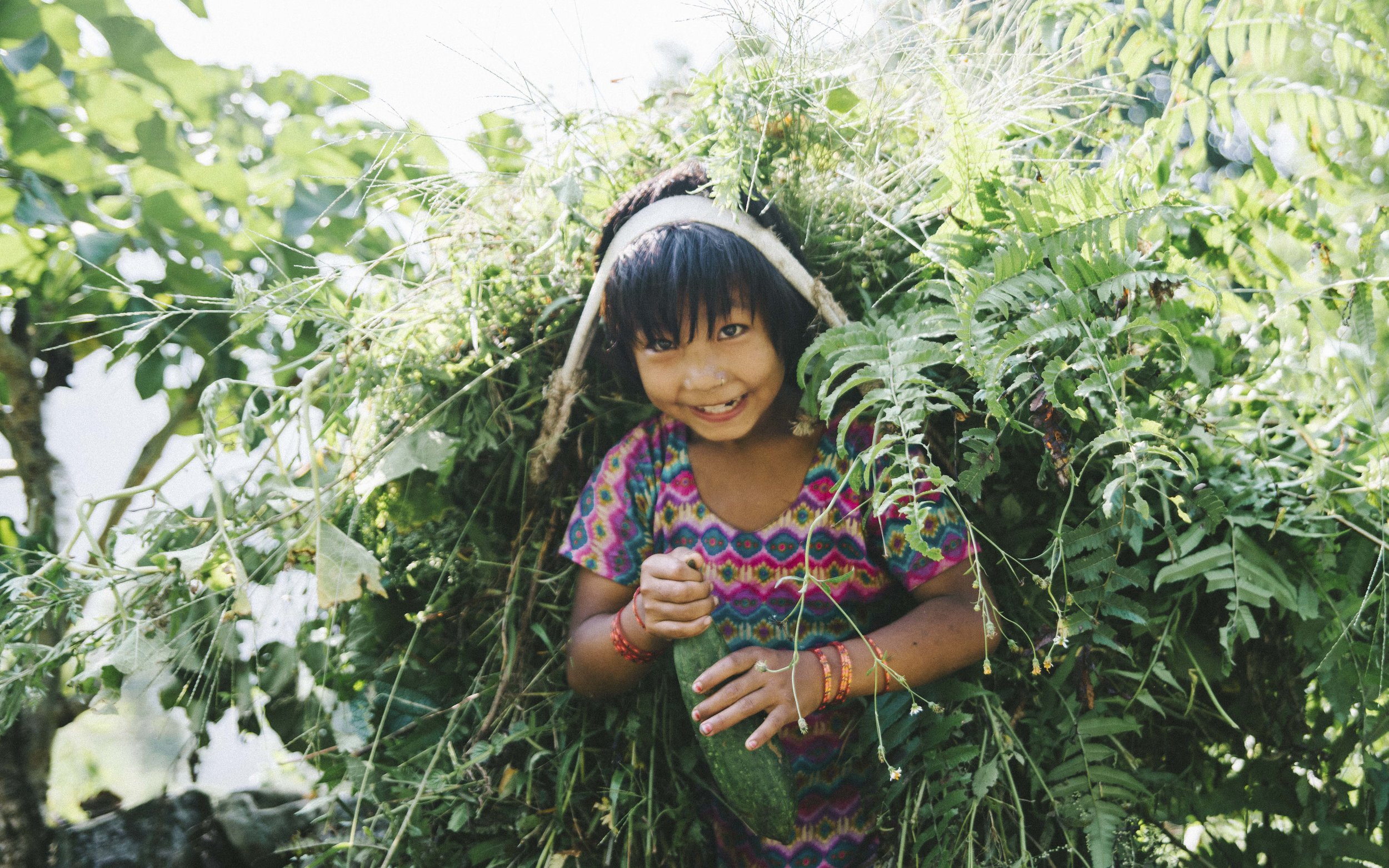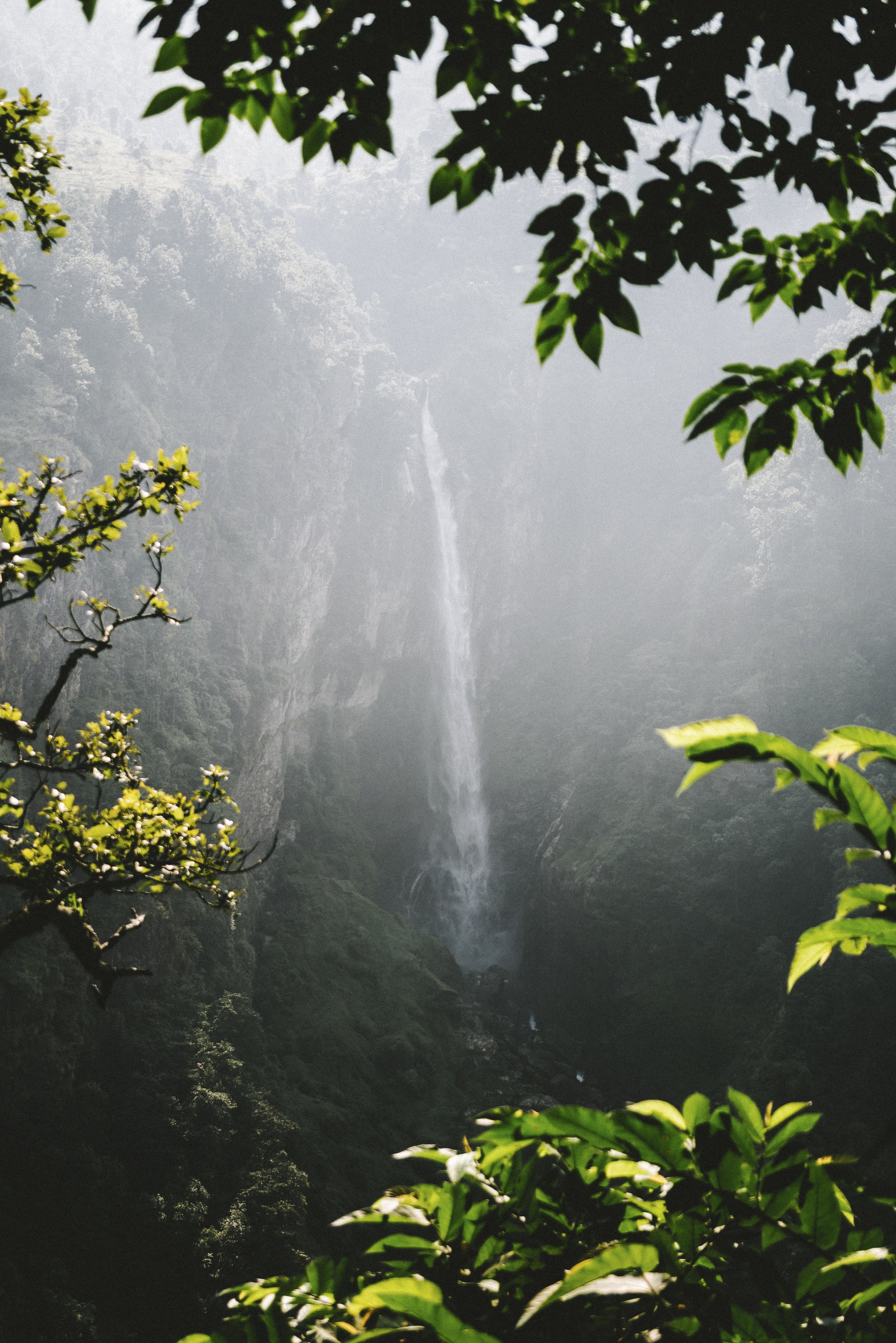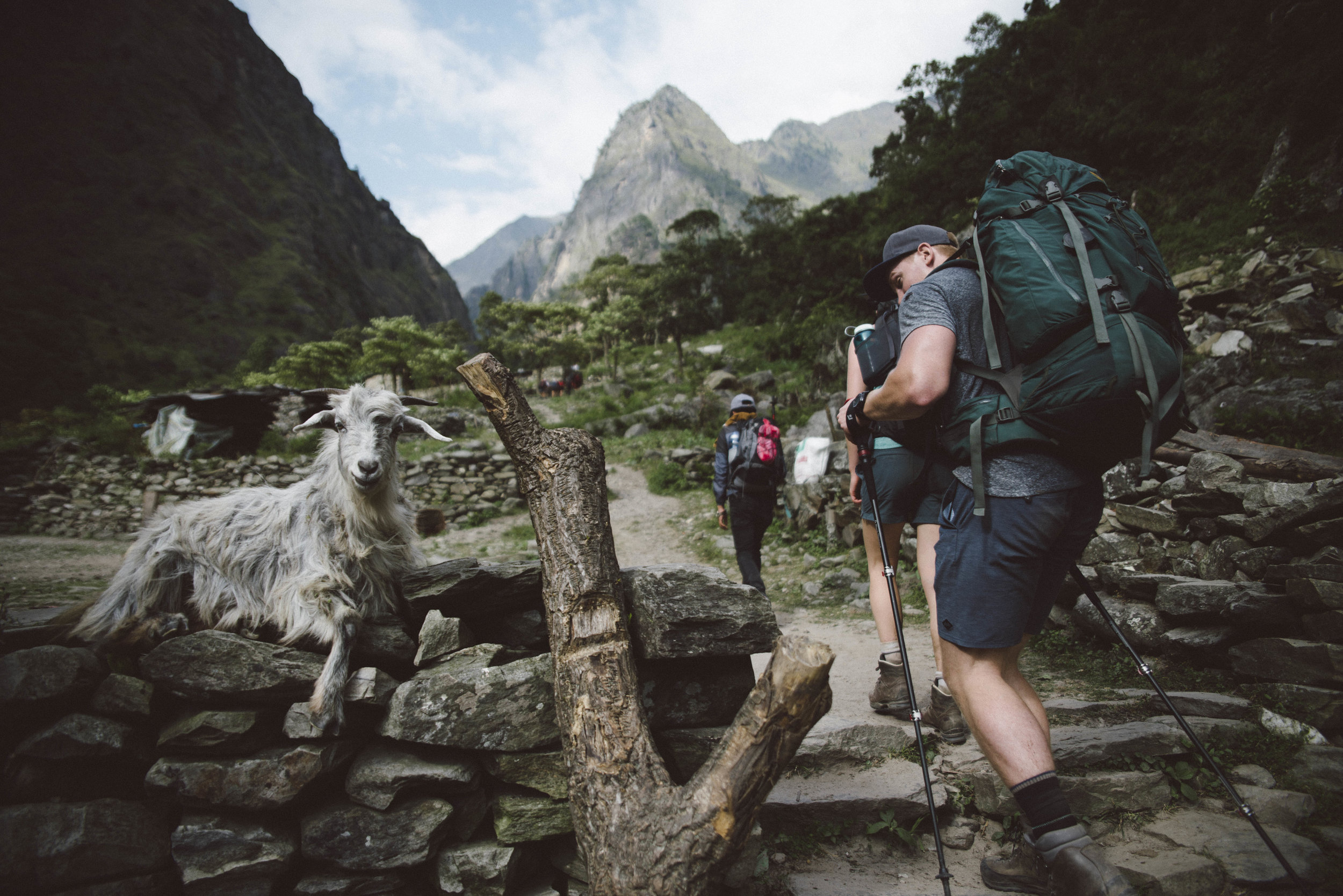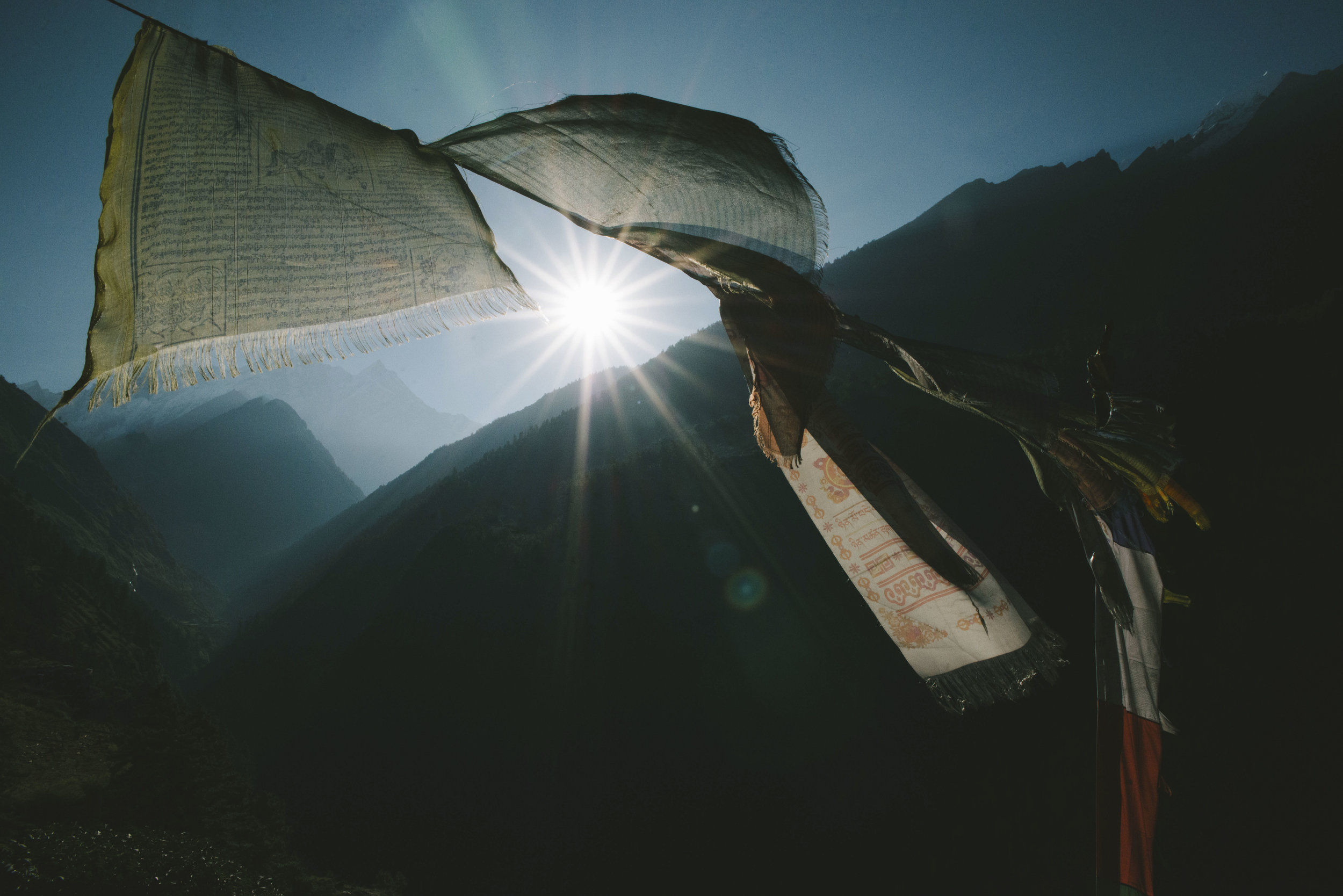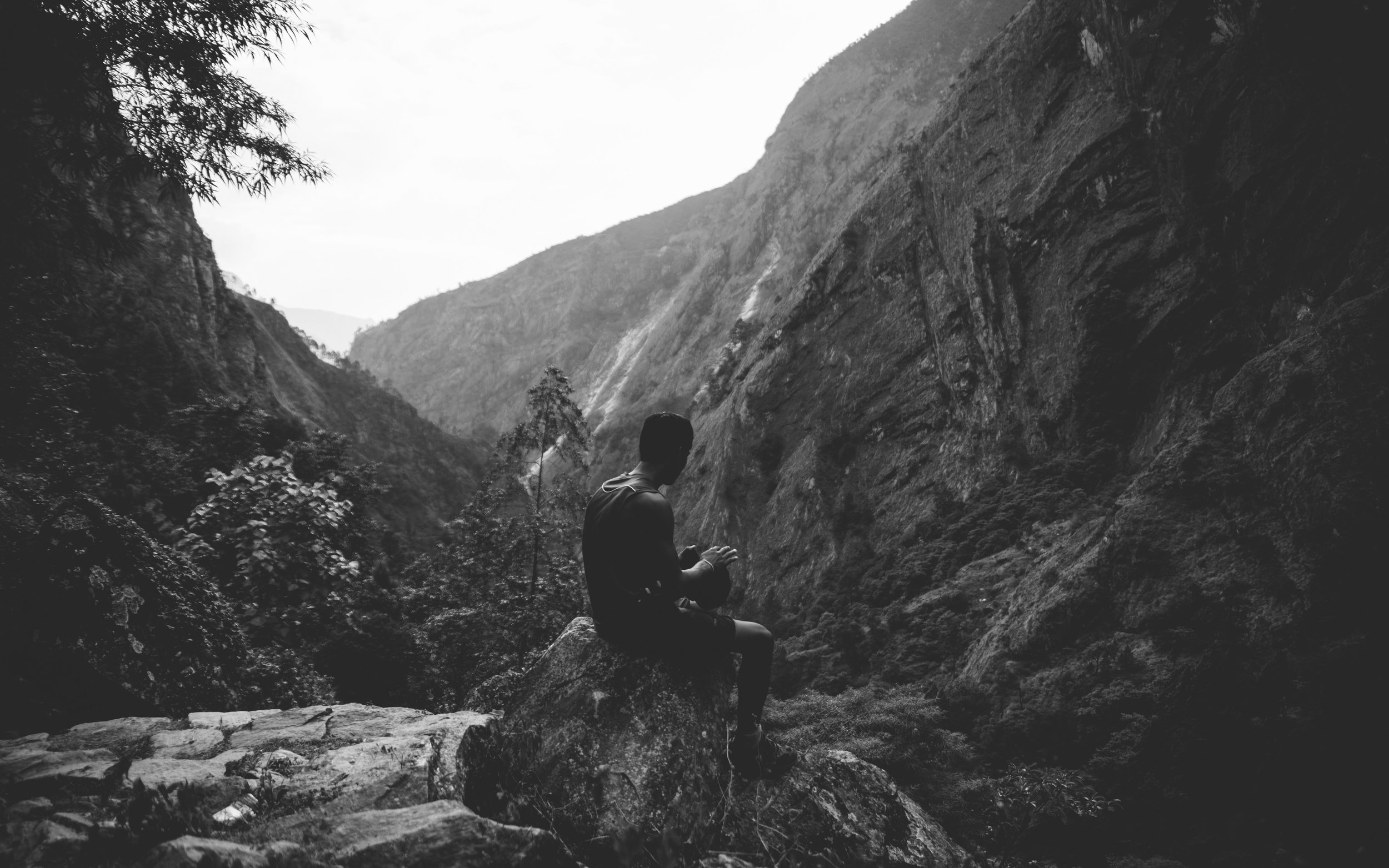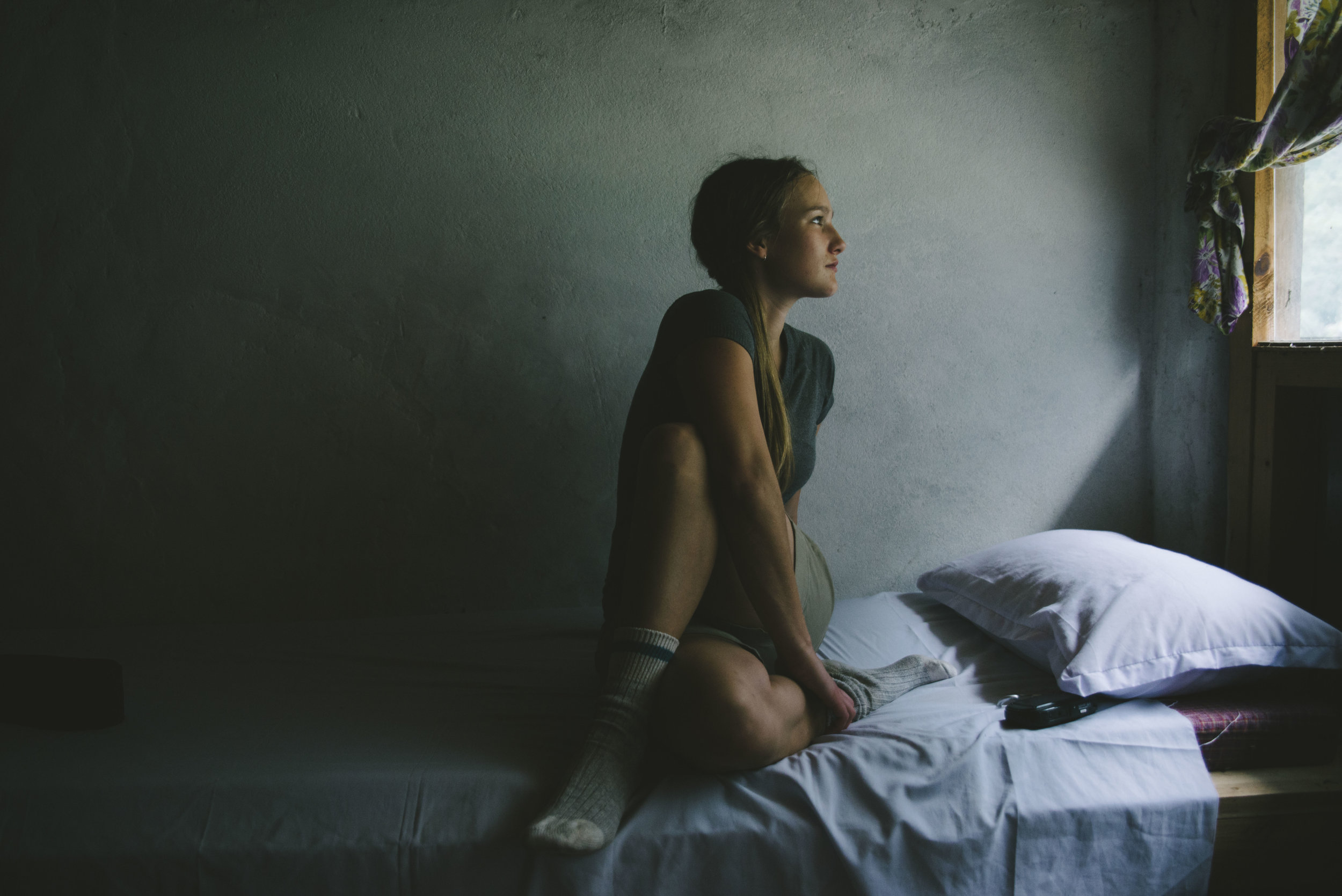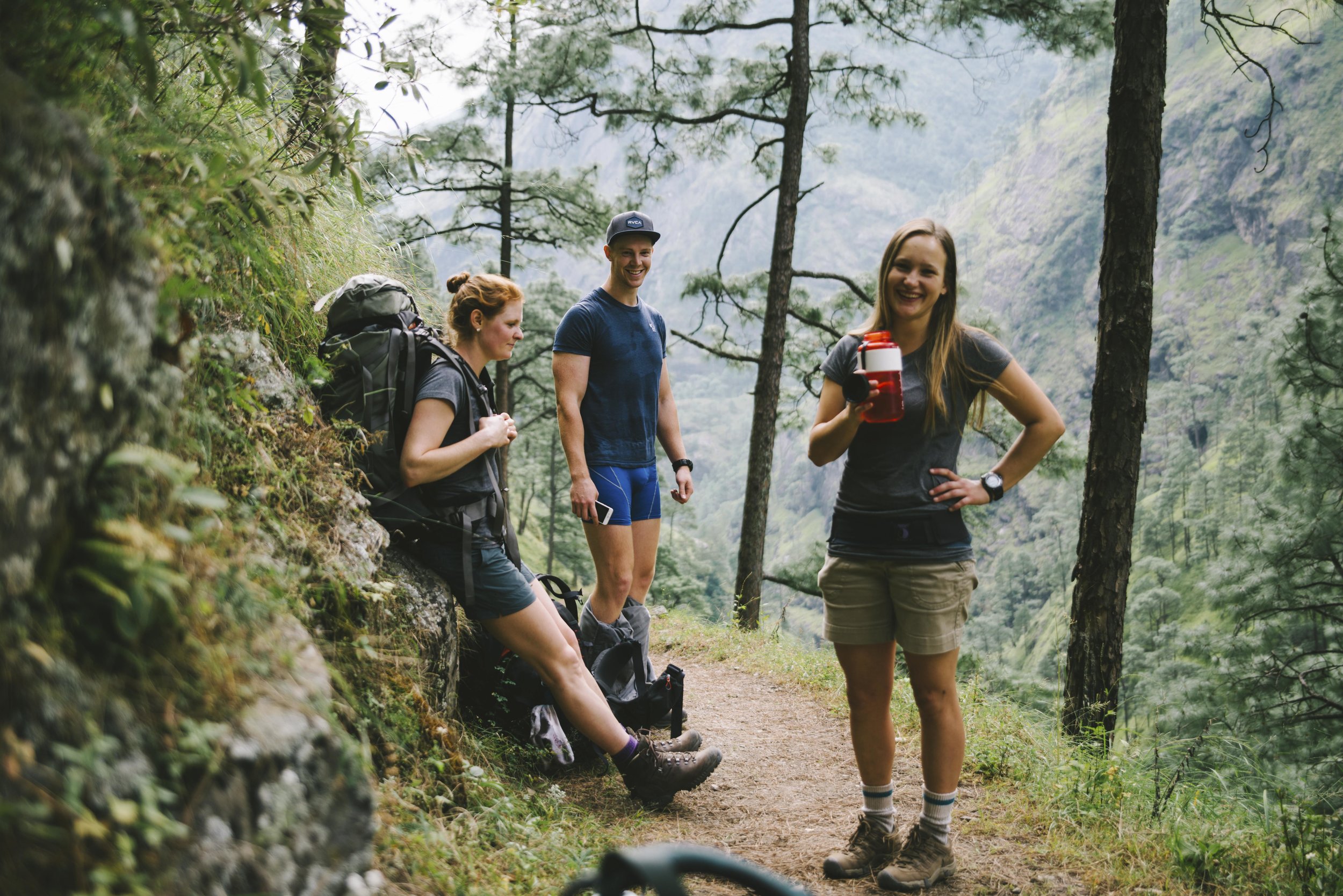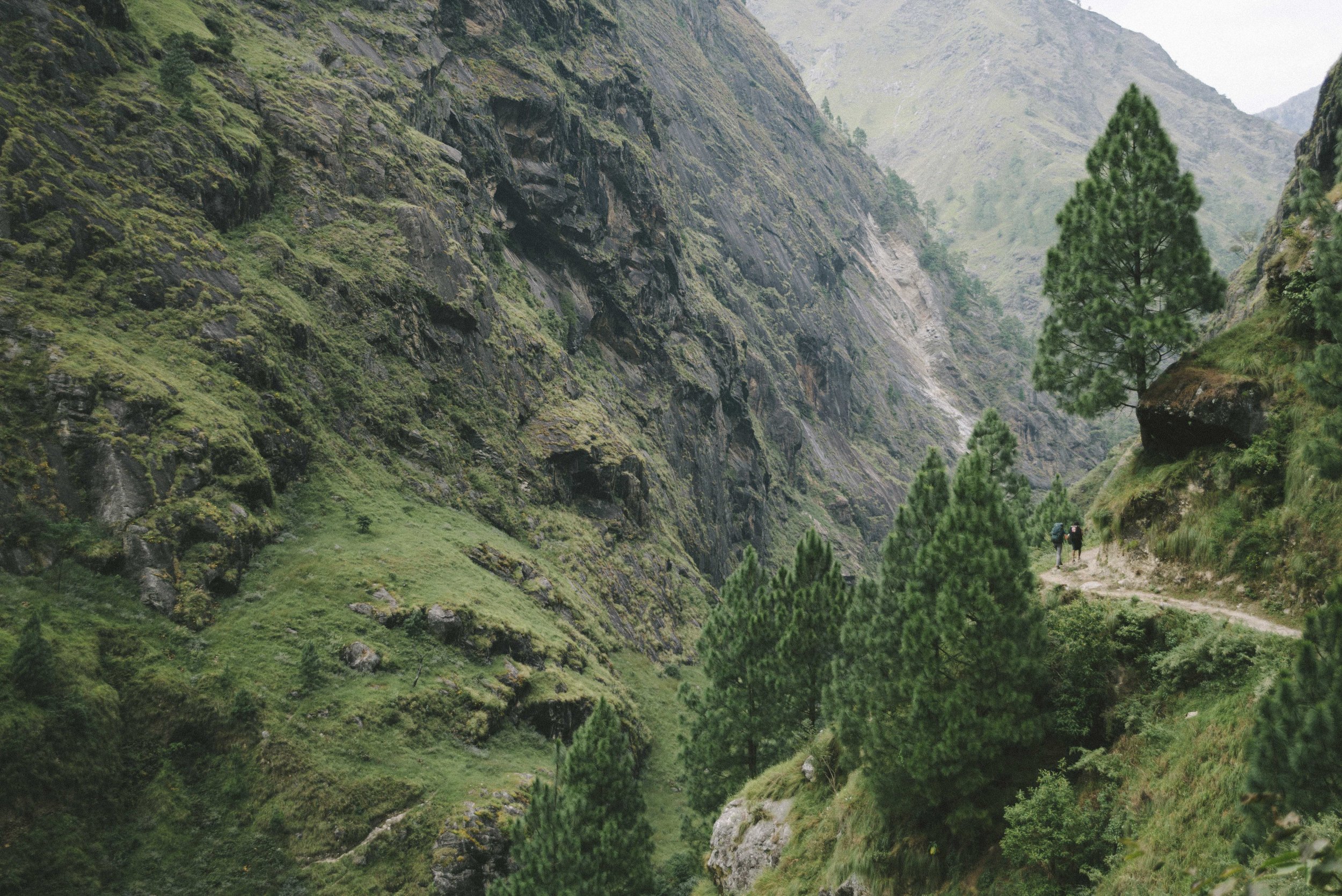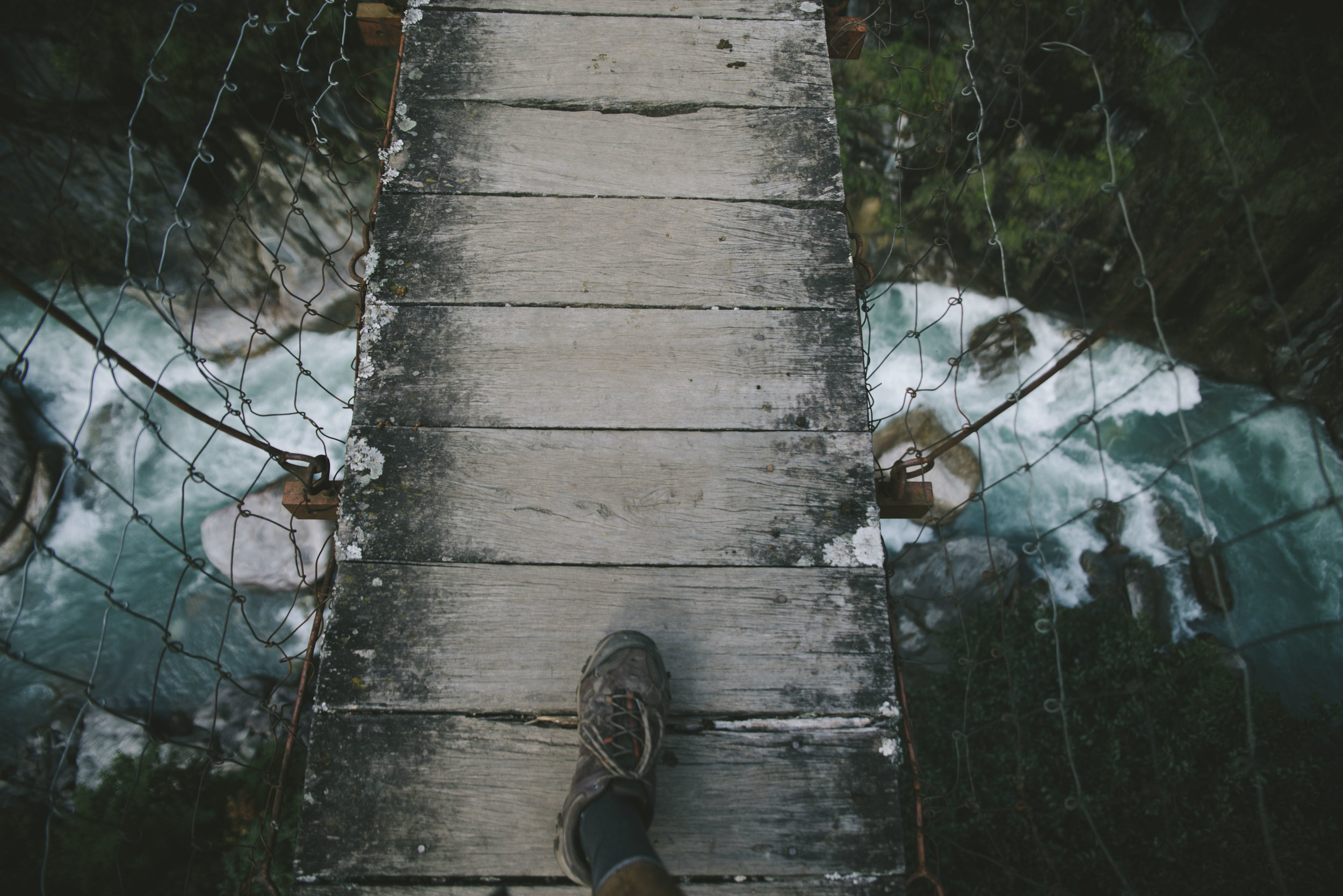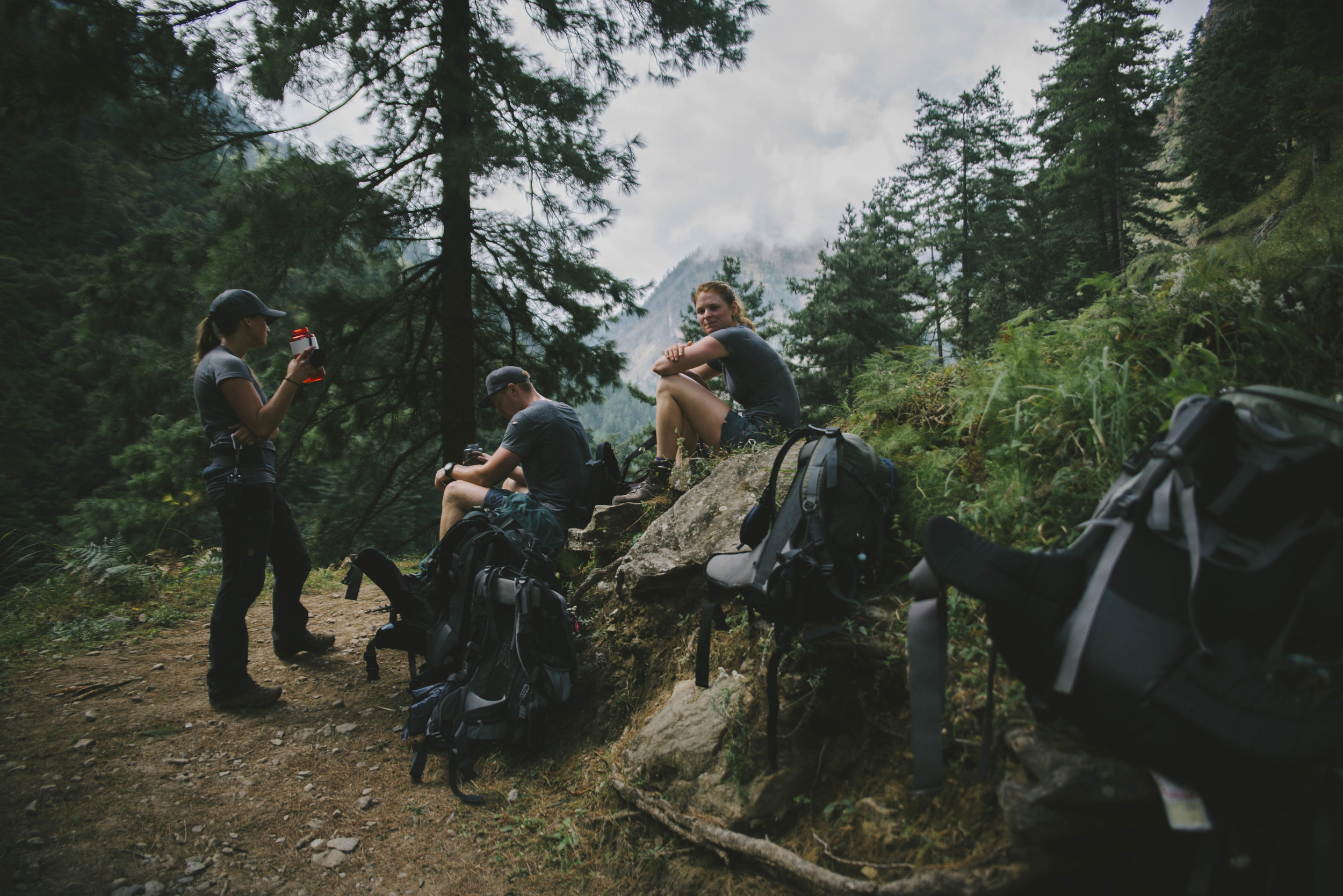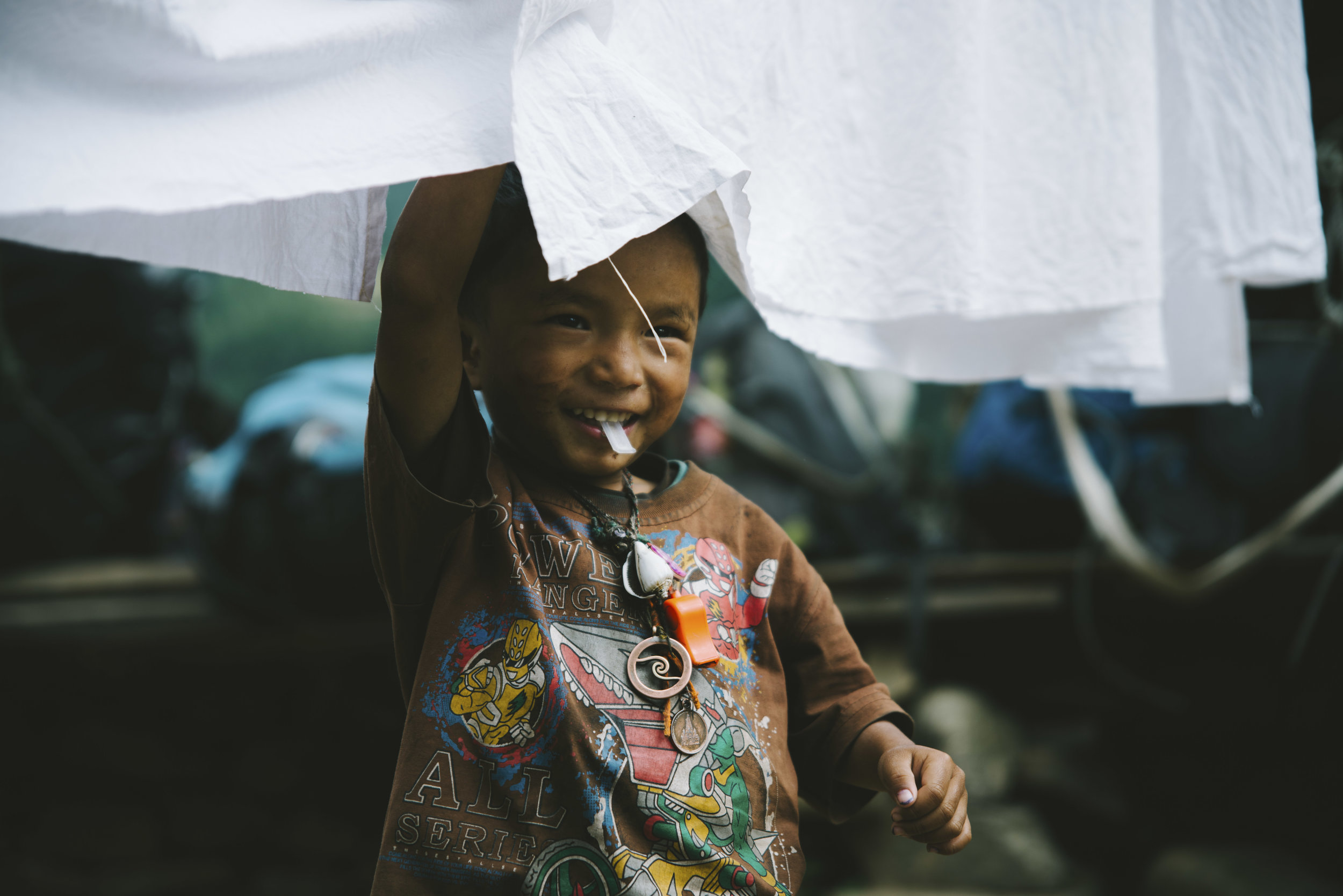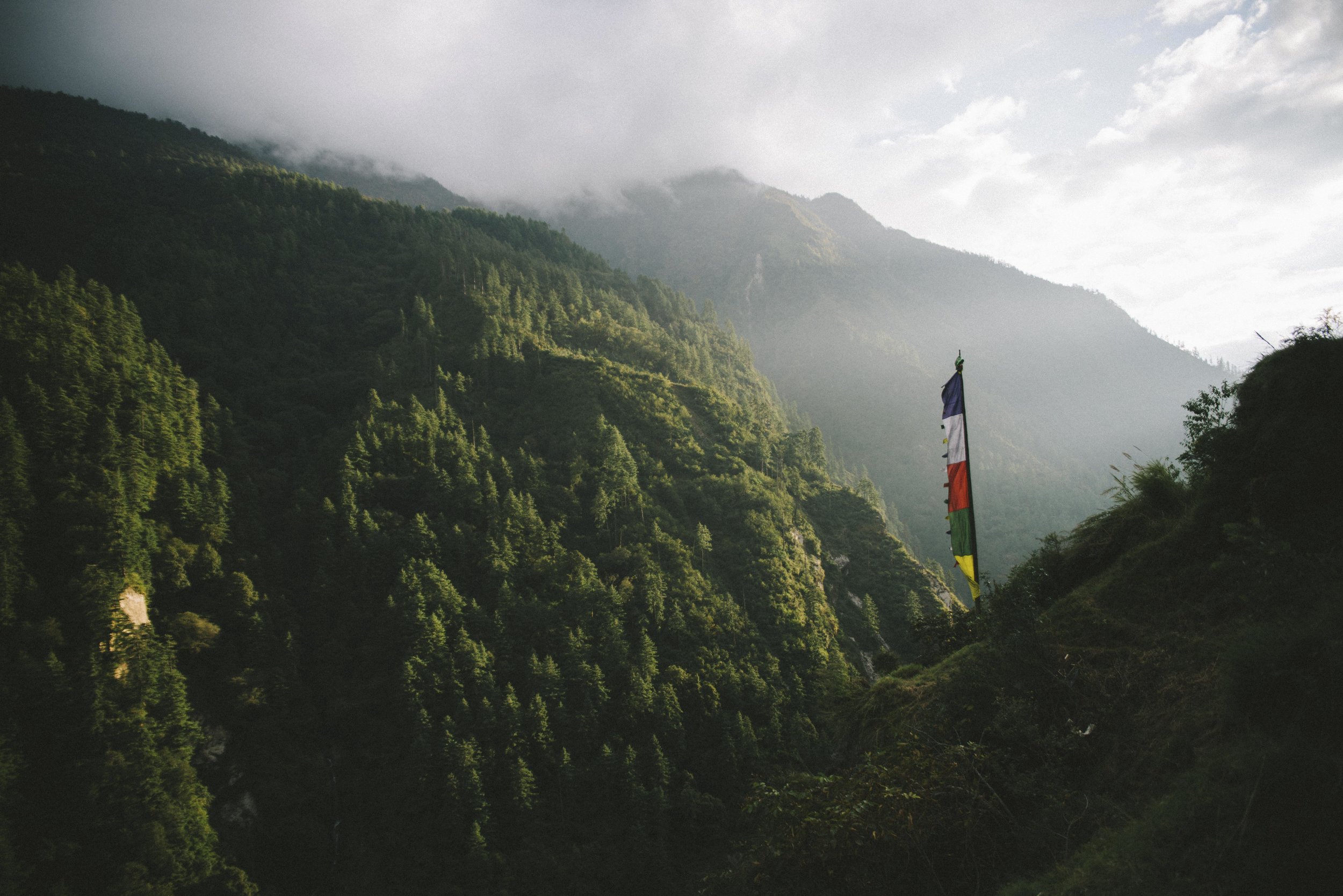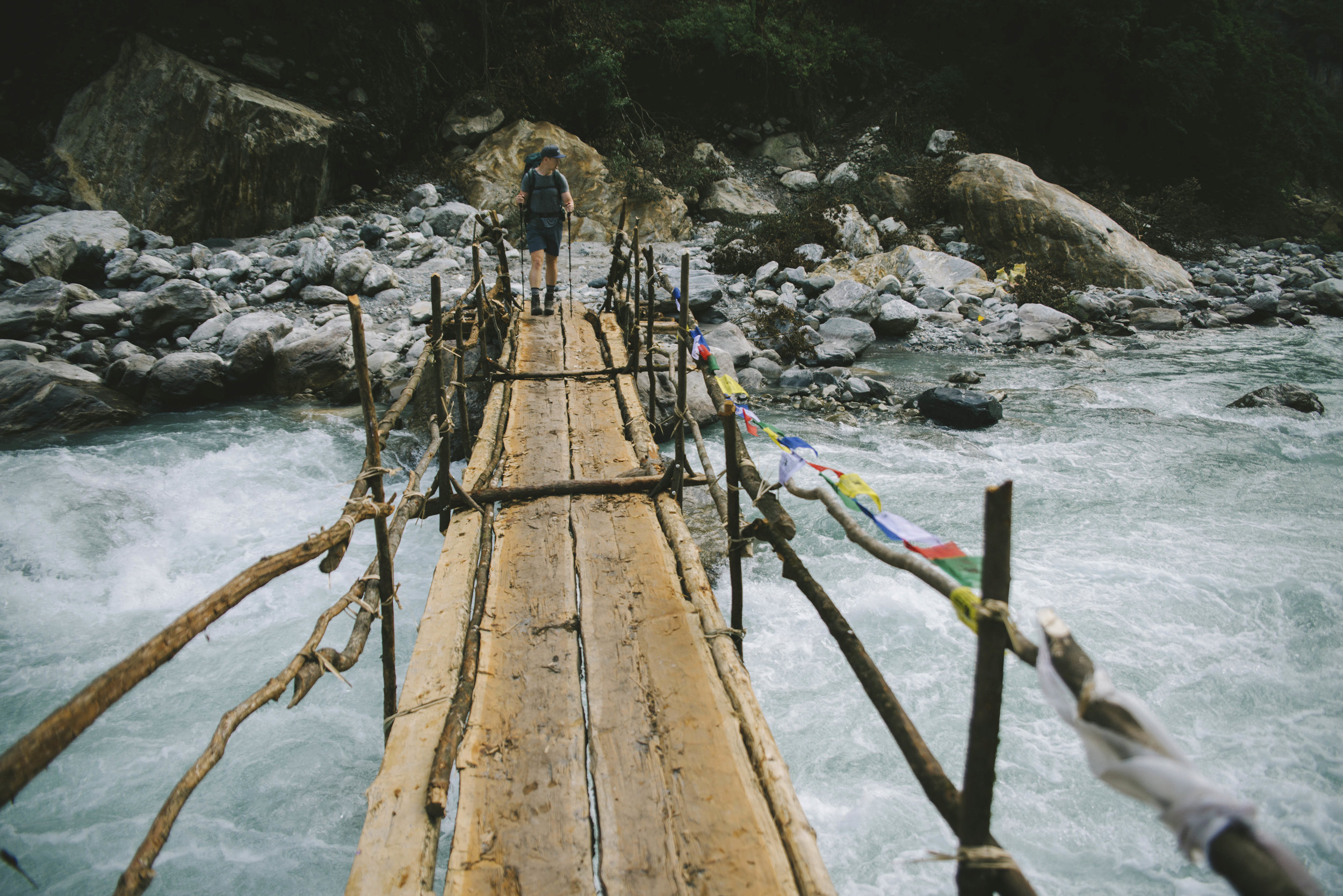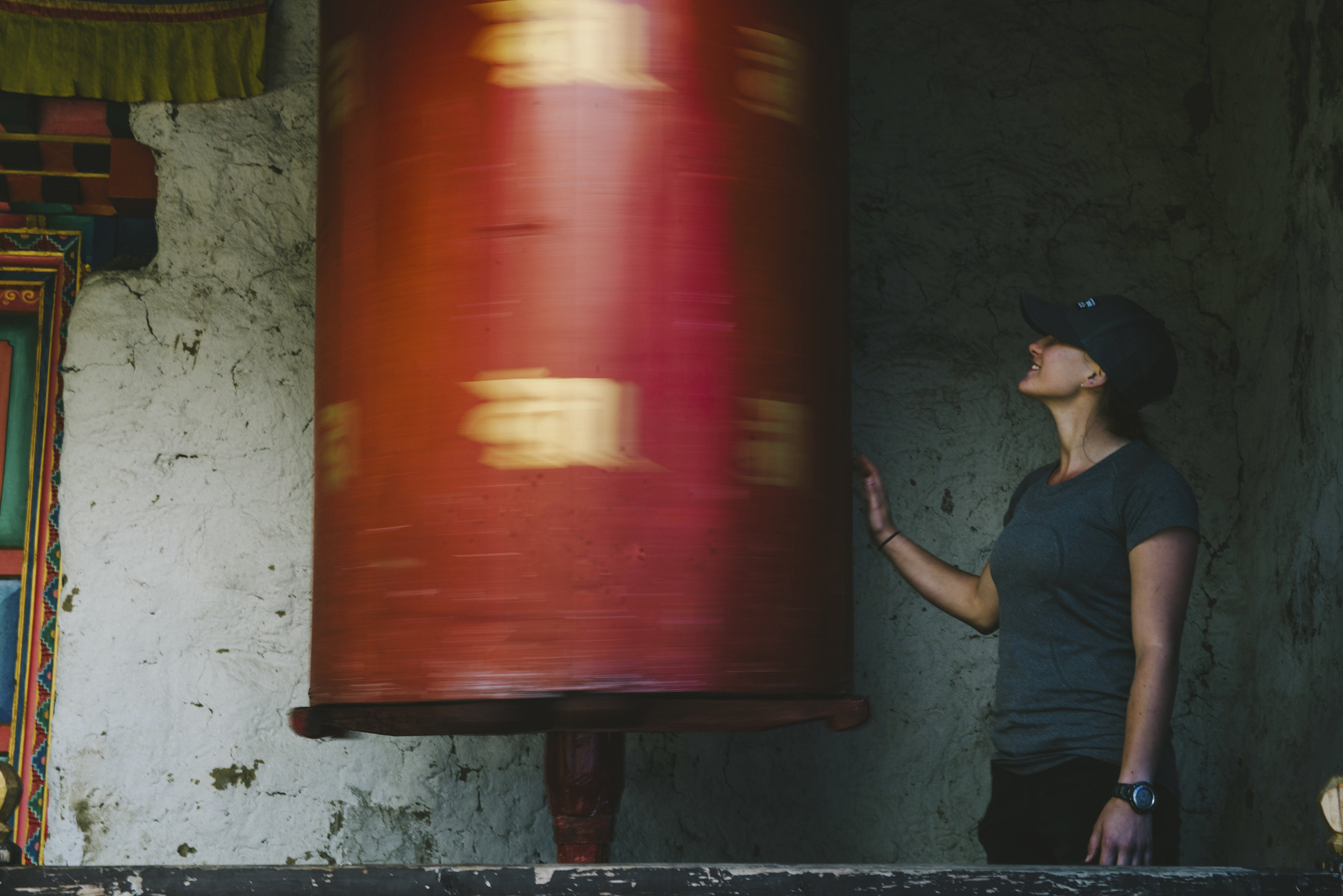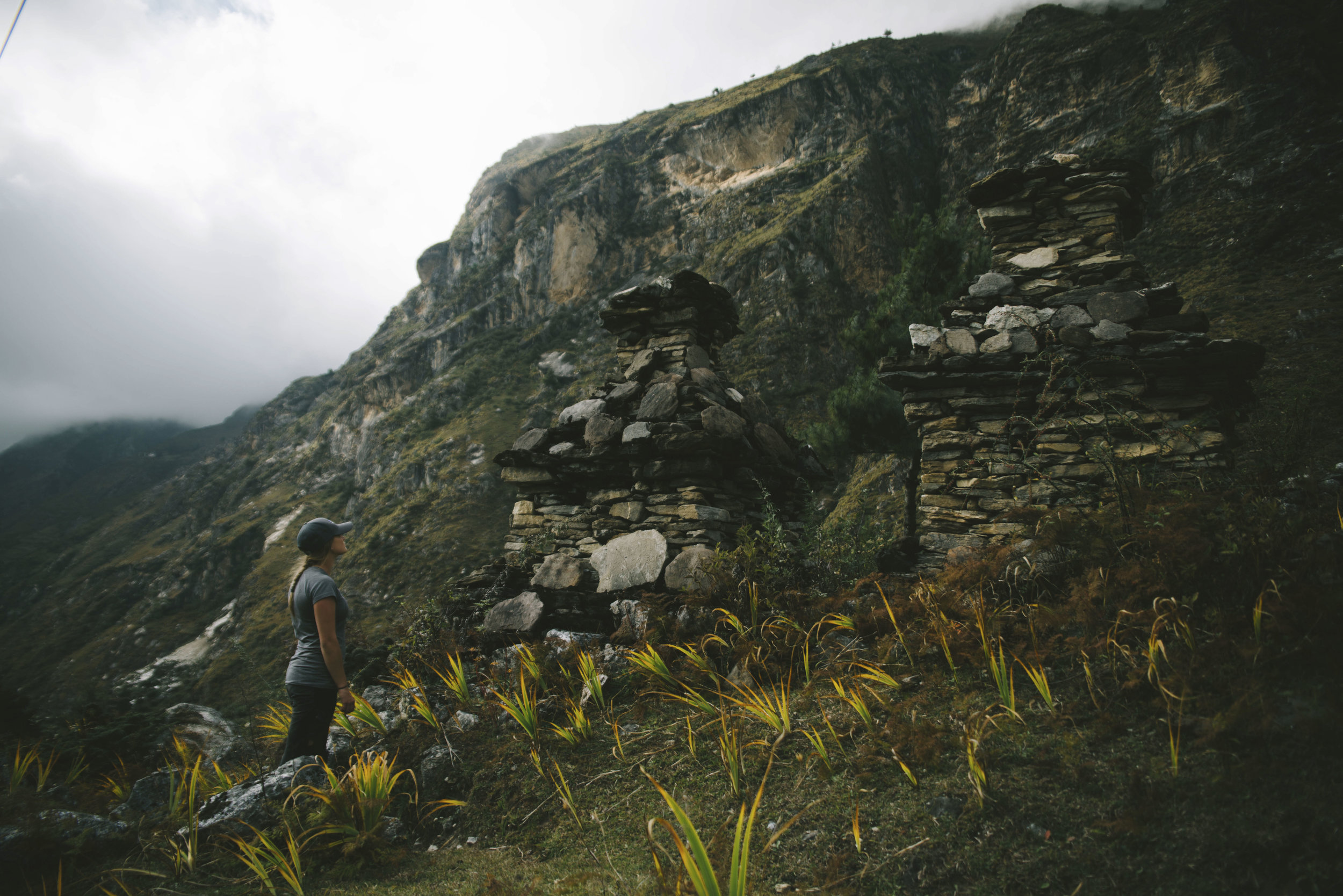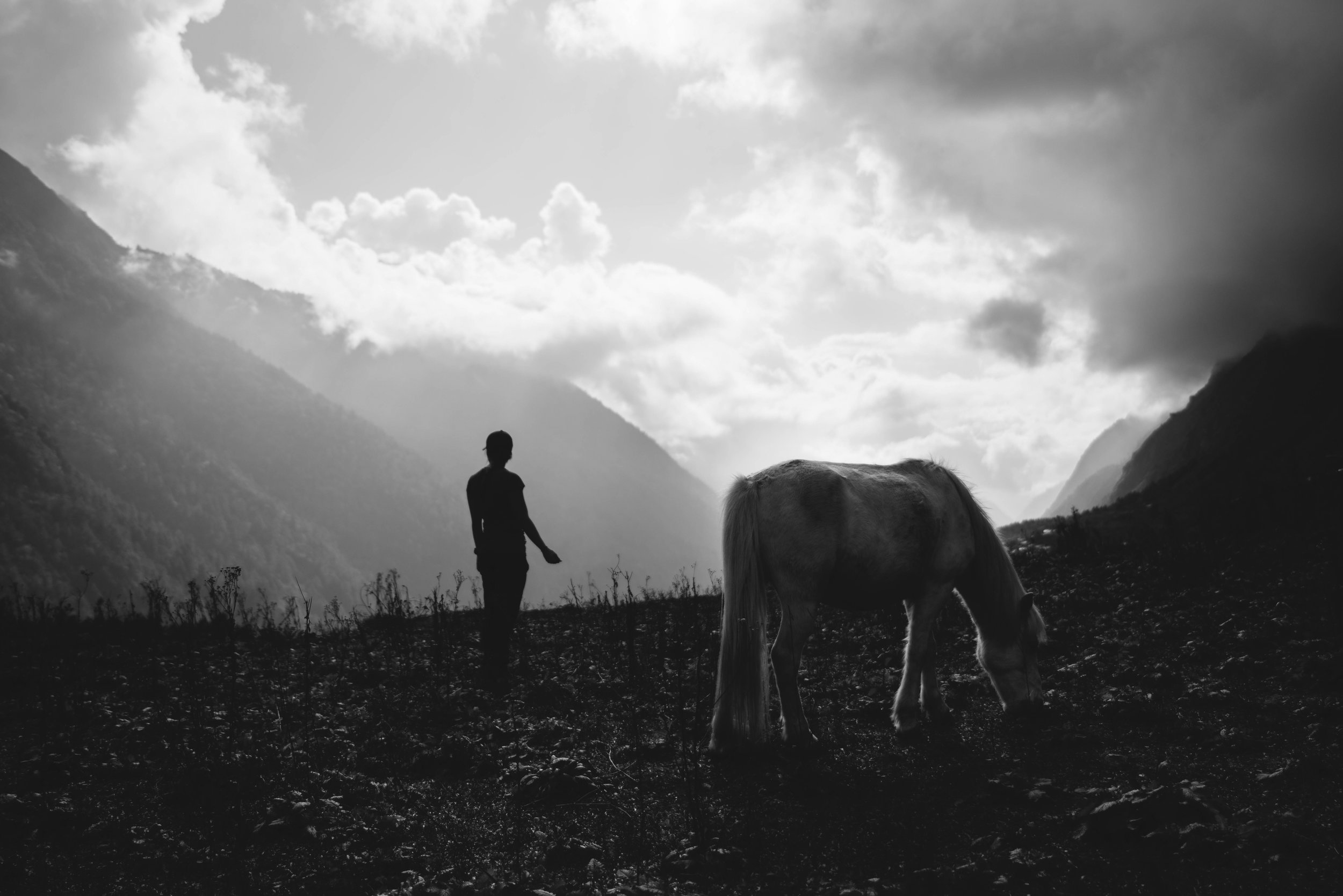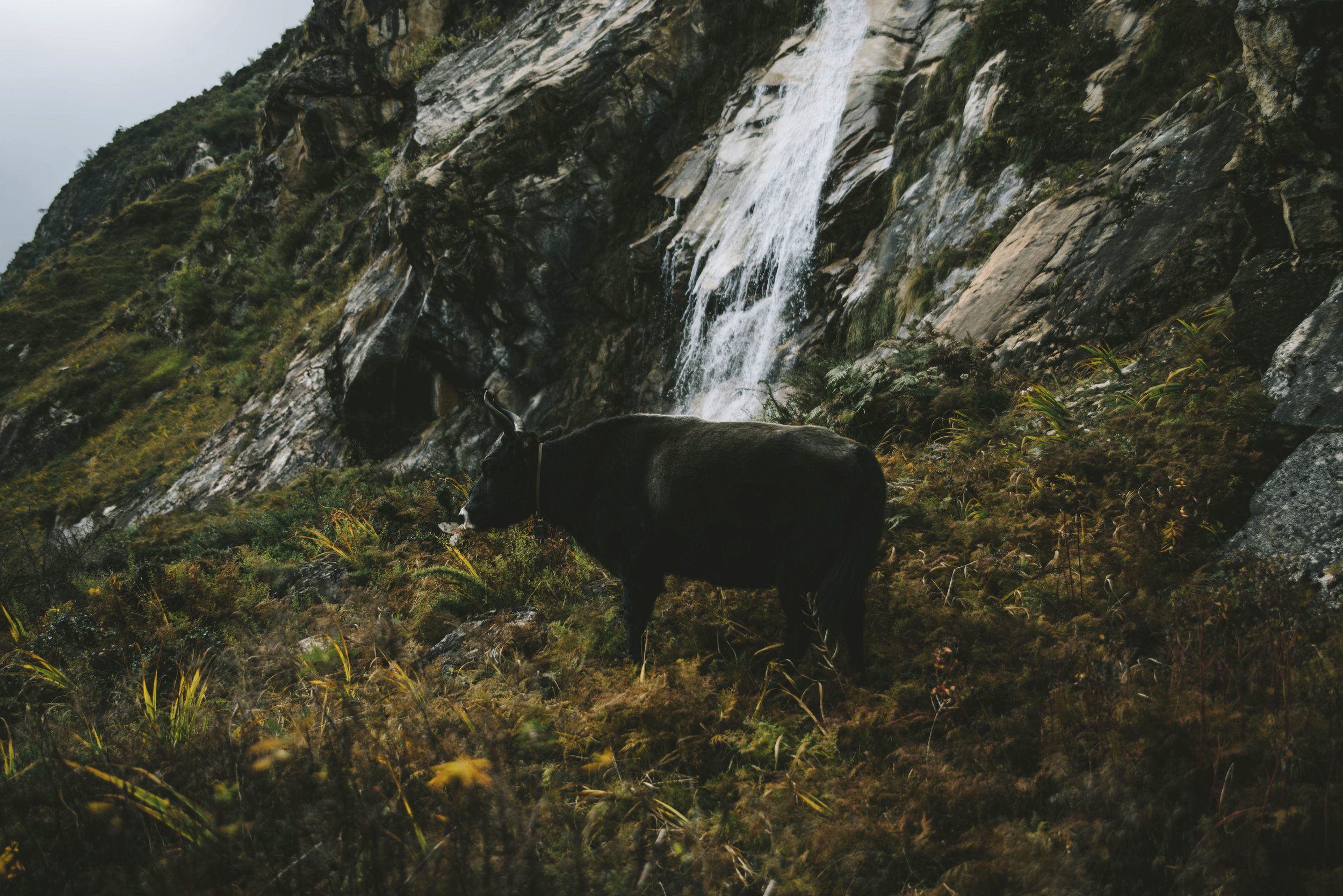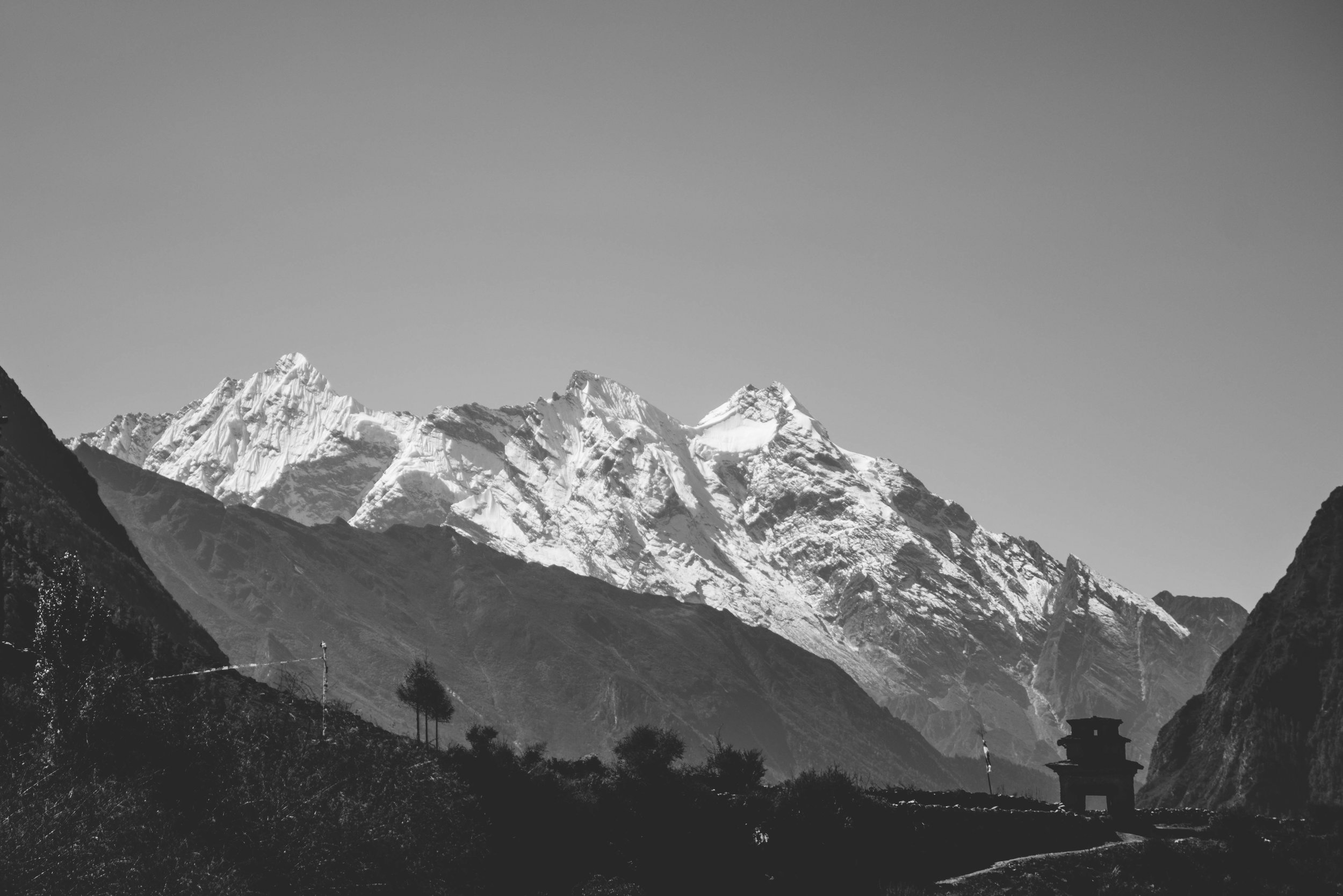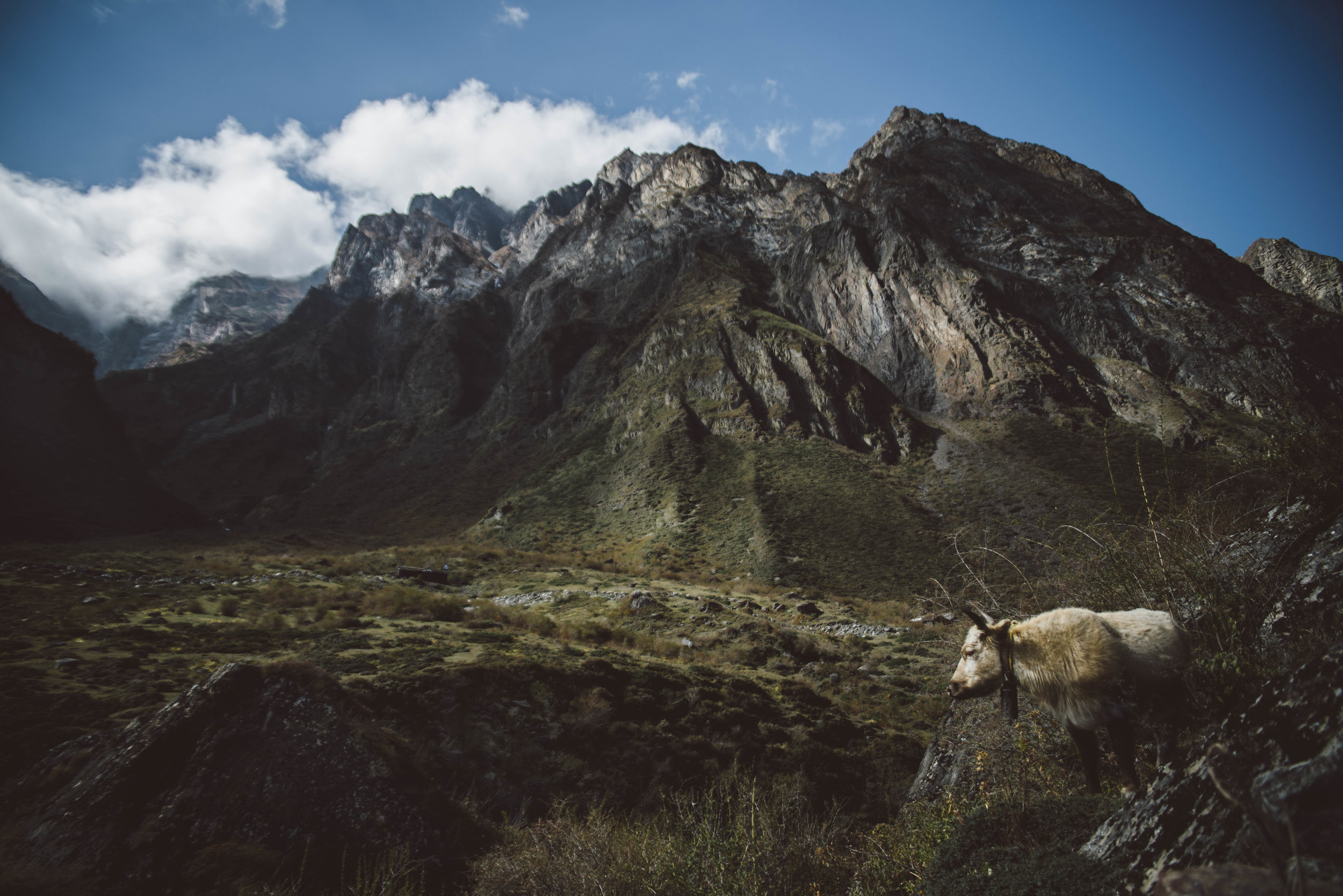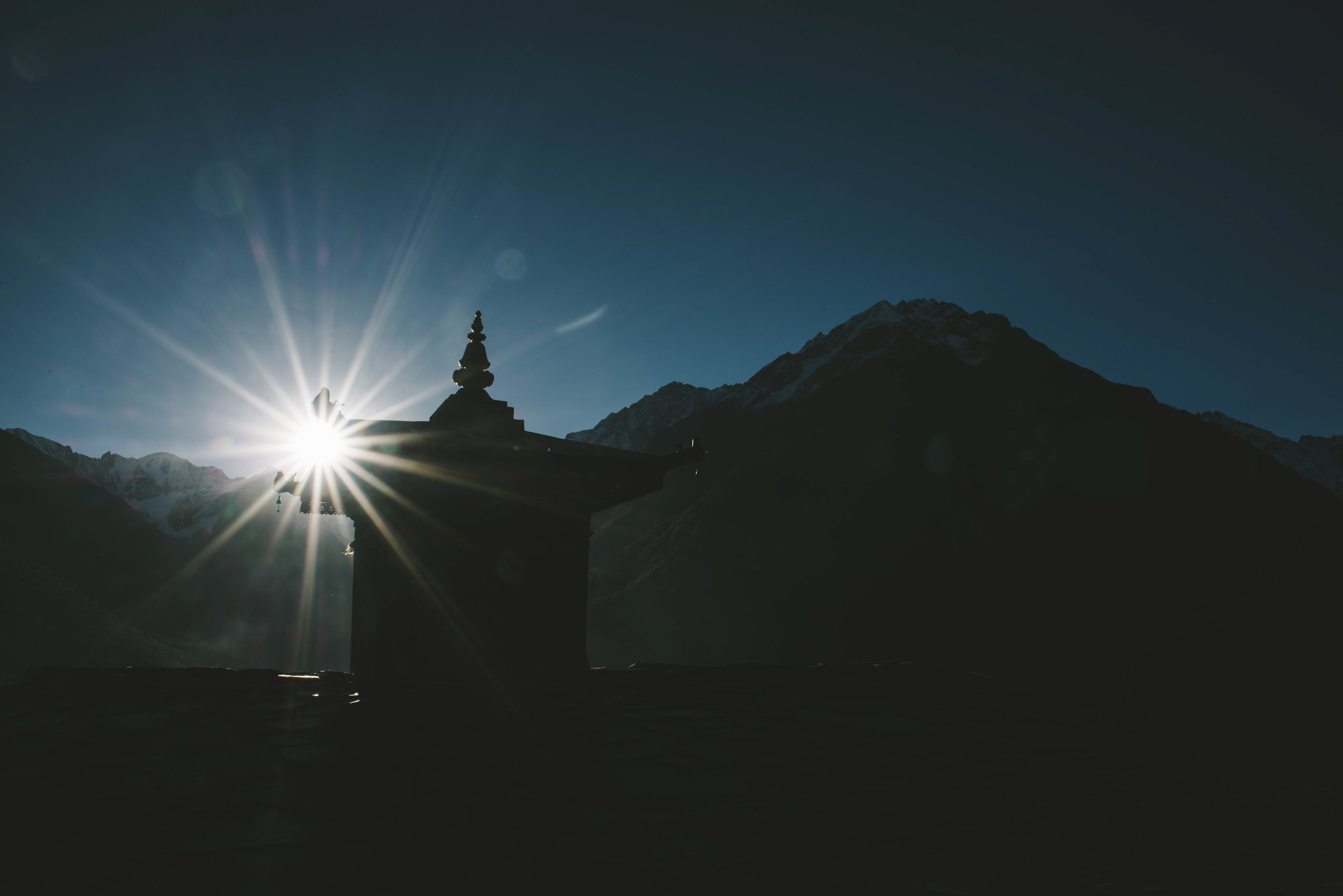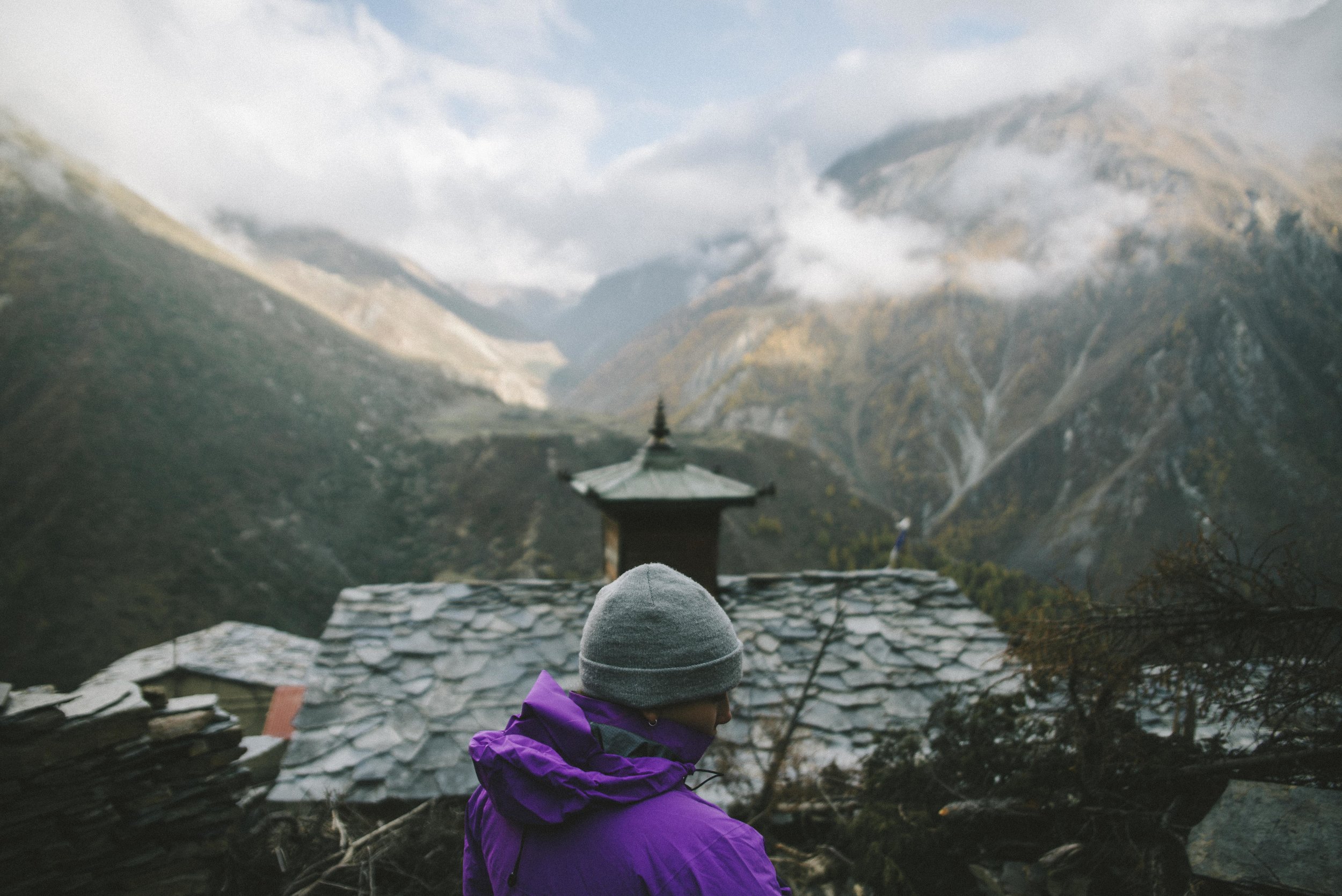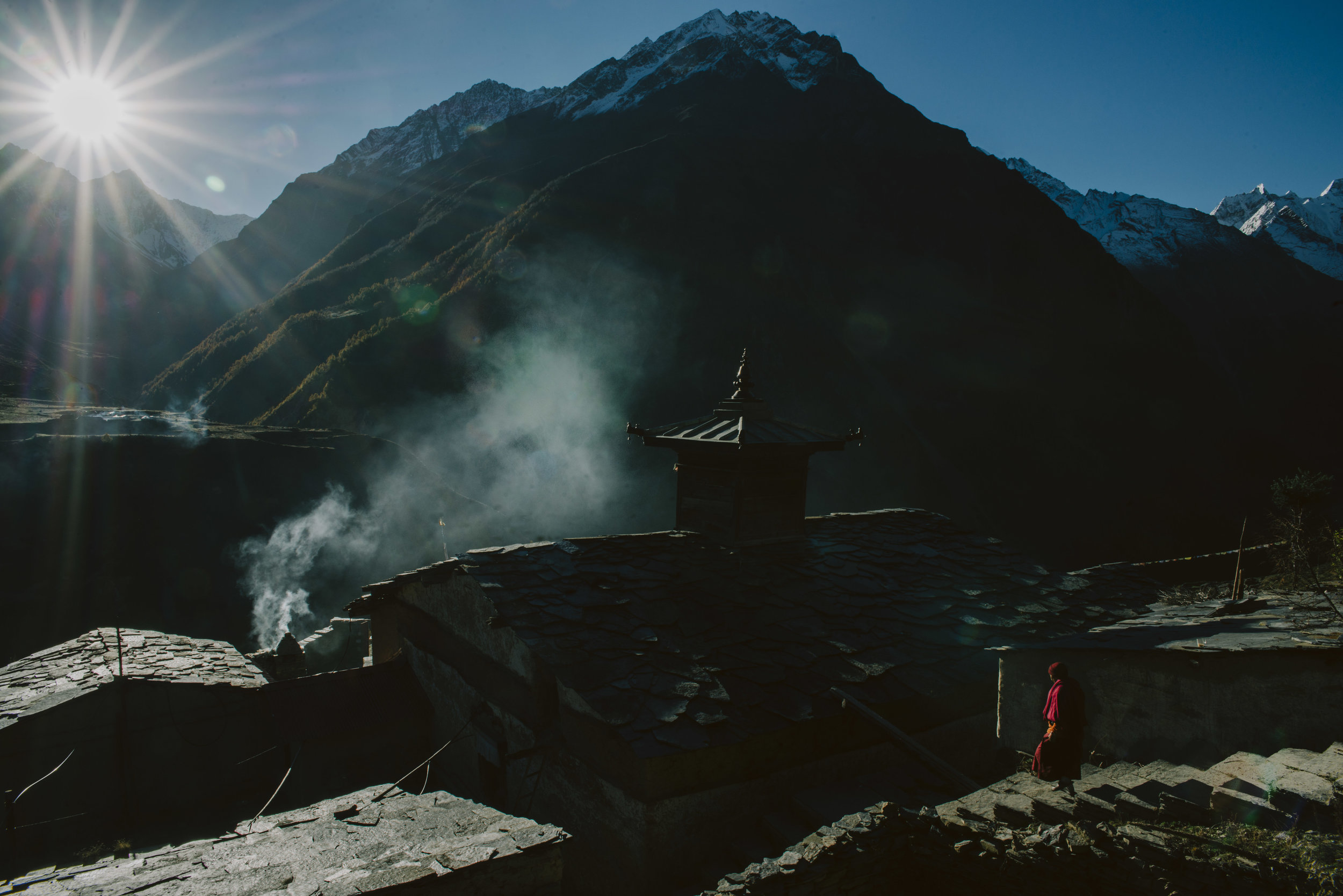Those last steps that take you across the treeline-alpine threshold are, in my experience, always the most rewarding. Scenic vistas unfold before your eyes and an uninhibited mountain breeze never fails to refresh the soul. The cool mountain air of alpine was never more appreciated than on this trek because the first 5 days sees you through a thick and clammy jungle. Temperatures were high, along with humidity levels, ensuring that a consistent and liberal river of sweat flowed forth.
This climate was maintained for the first 2000m or so and we were starting to wonder if we had over packed; seeing as how the use of a sleeping bag was a kin to a sweat lodge and the mere thought of a down jacket was enough to contemplate throwing it away. This is where you take advantage of those bucket showers because the climate flips a switch faster than you'd ever expect. One day you're blinking sweat out of your eyes, the next you're chipping ice off the rim of your Nalgene.
For those of you who have never delighted in a Nepalese bucket shower it becomes both a dreaded experience and a luxury. Considering I had mentally prepared to skinny dip in mountain streams, I was pleasantly surprised to find that most places could facilitate a decent amount of privacy if not comfort. Many guesthouses have signs promising hot showers. Once you realize that these are nothing more than fictitious lies existing only to lure the ignorant, you can move on and face the reality. Most endeavours went something like this:
Step 1: finding the tap. It's usually located in the stone shack you assumed was for firewood on the way in.
Step 2: finding the bucket. Usually next to the tap but I had to consult with the kitchen staff a couple of times. They were using it to cook that nights meal (one of those things you try and forget).
Step 3: mental preparedness. Things are going to turn blue and brain freeze is inevitable.
Step 4: a new person. You learn to love it.
The Manaslu Circuit to the local population is a supply route that has been used since antiquity to move goods up and down the Himalayas. There are no roads so the Nepalese rely on their bodies as well as their animals to transport food and supplies across the mountain range.
The first time you witness the hardiness of Nepalese porters, grinding their way up a Himalayan slope, is truly humbling. Sometimes the porter evades sight and all that is seen is a monumental stack of sugar cane lumbering it's way up a mountain, seemingly of its own accord. This is made even more impressive by the fact that they use their head to carry most of the load. A strap around the forehead supports the burden on their back.
The alternative, to porters, is using either donkeys or yaks. For this reason there exists a close relationship between the people and their livestock, a relationship I chose to focus on when photographing my experience. Mules that are considered the best pack leaders are often dressed up in extravagant head pieces to represent their superior status among the herd. This extends to yaks, horses and cattle who are often seen sporting decorative necklaces or ear pieces. The one piece of advice everyone loves to share is to ensure you are on the inside lane when donkeys pass. From what I've heard more than a few trekkers have met there end by being pushed off the side of a mountain.
These shots show the transition from jungle to alpine with a placed emphasis on the livestock that I found to be so representative of the Nepalese people.

